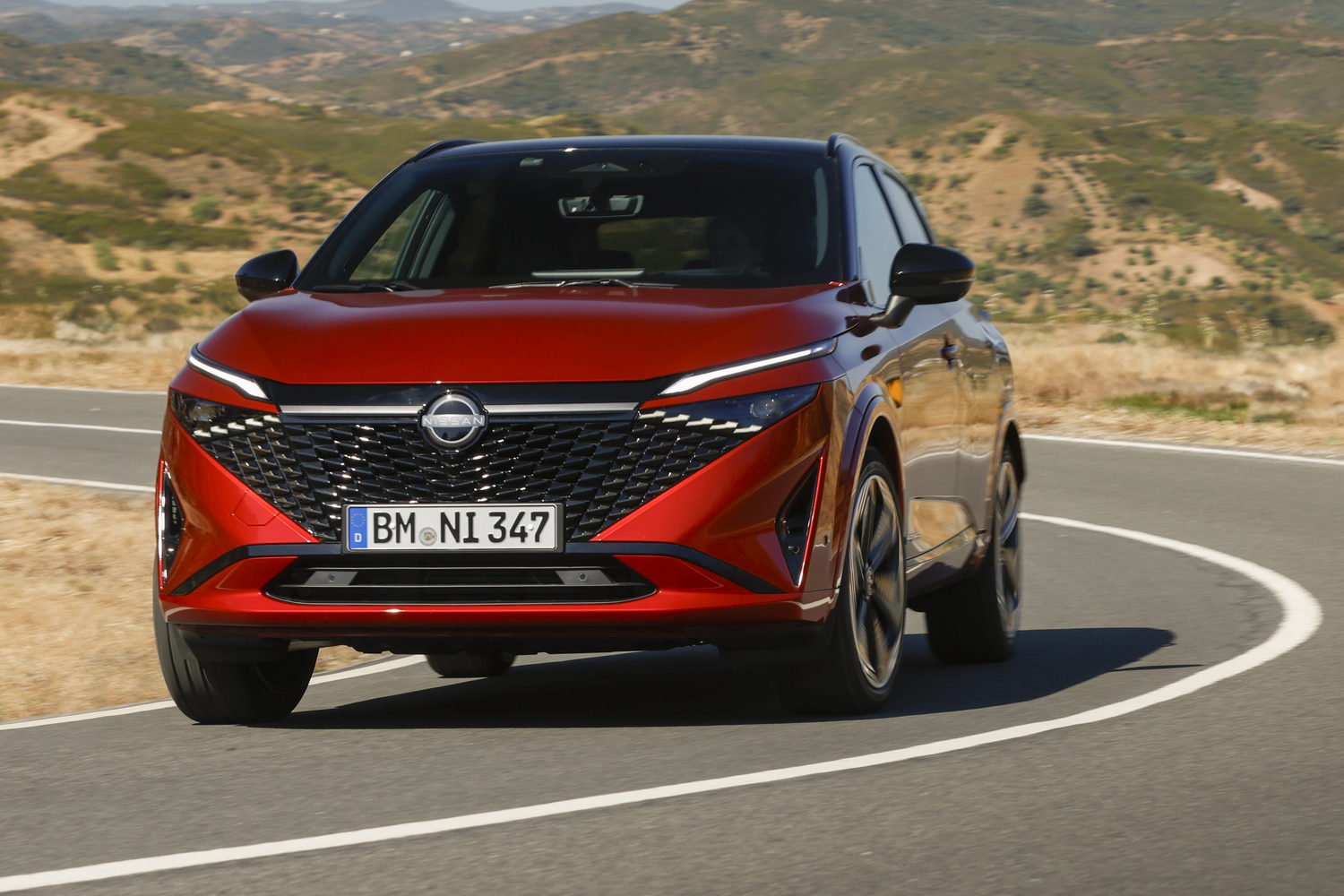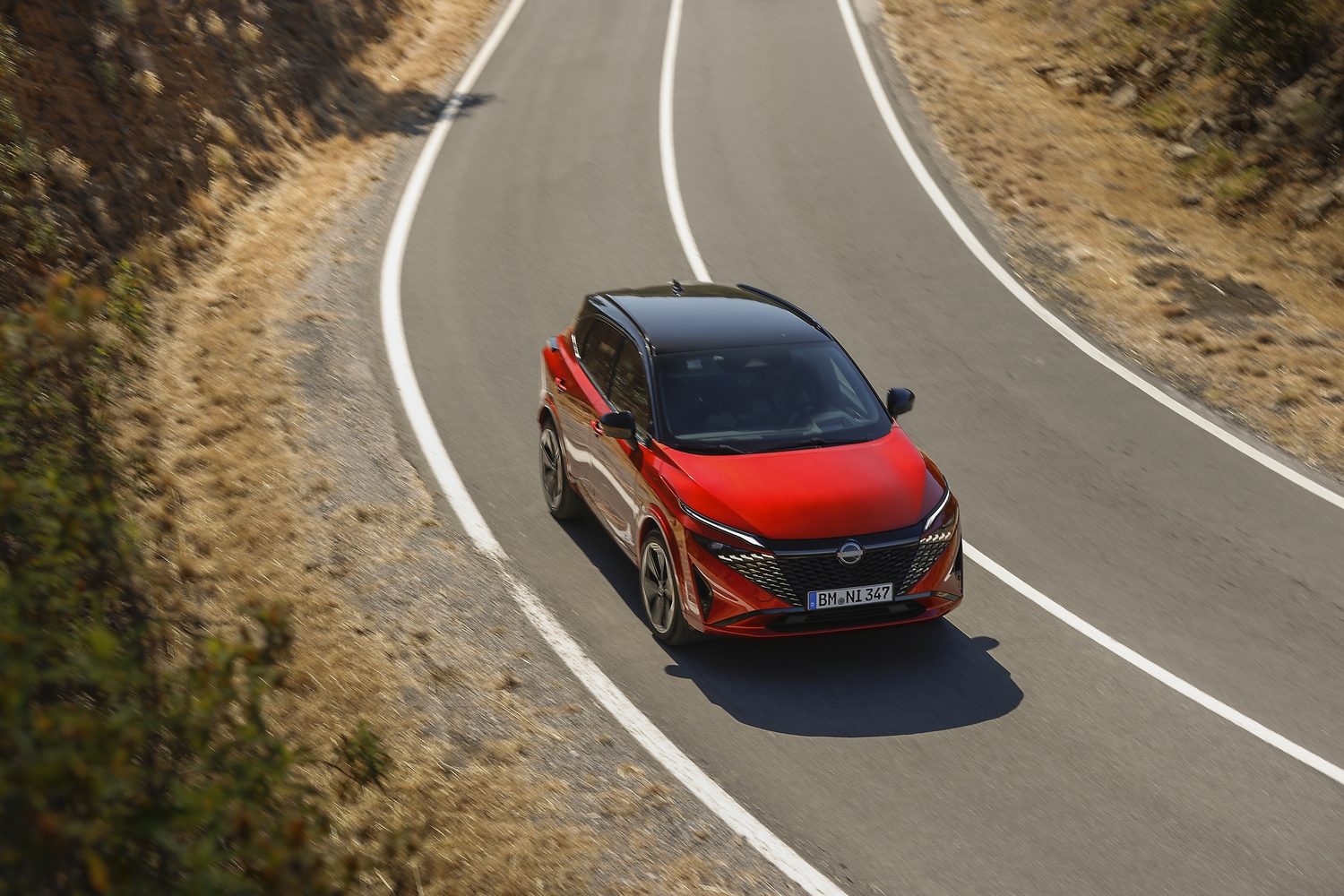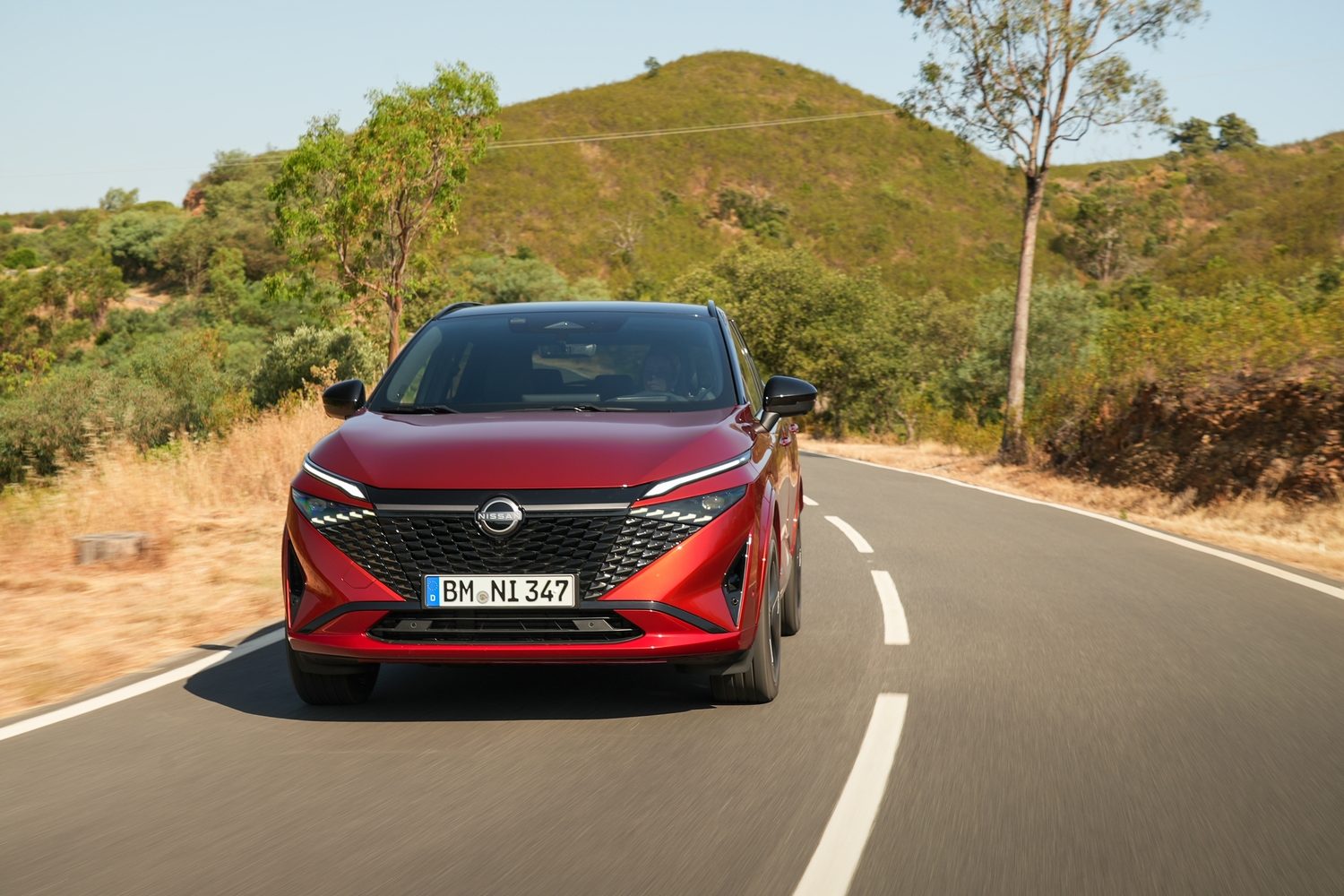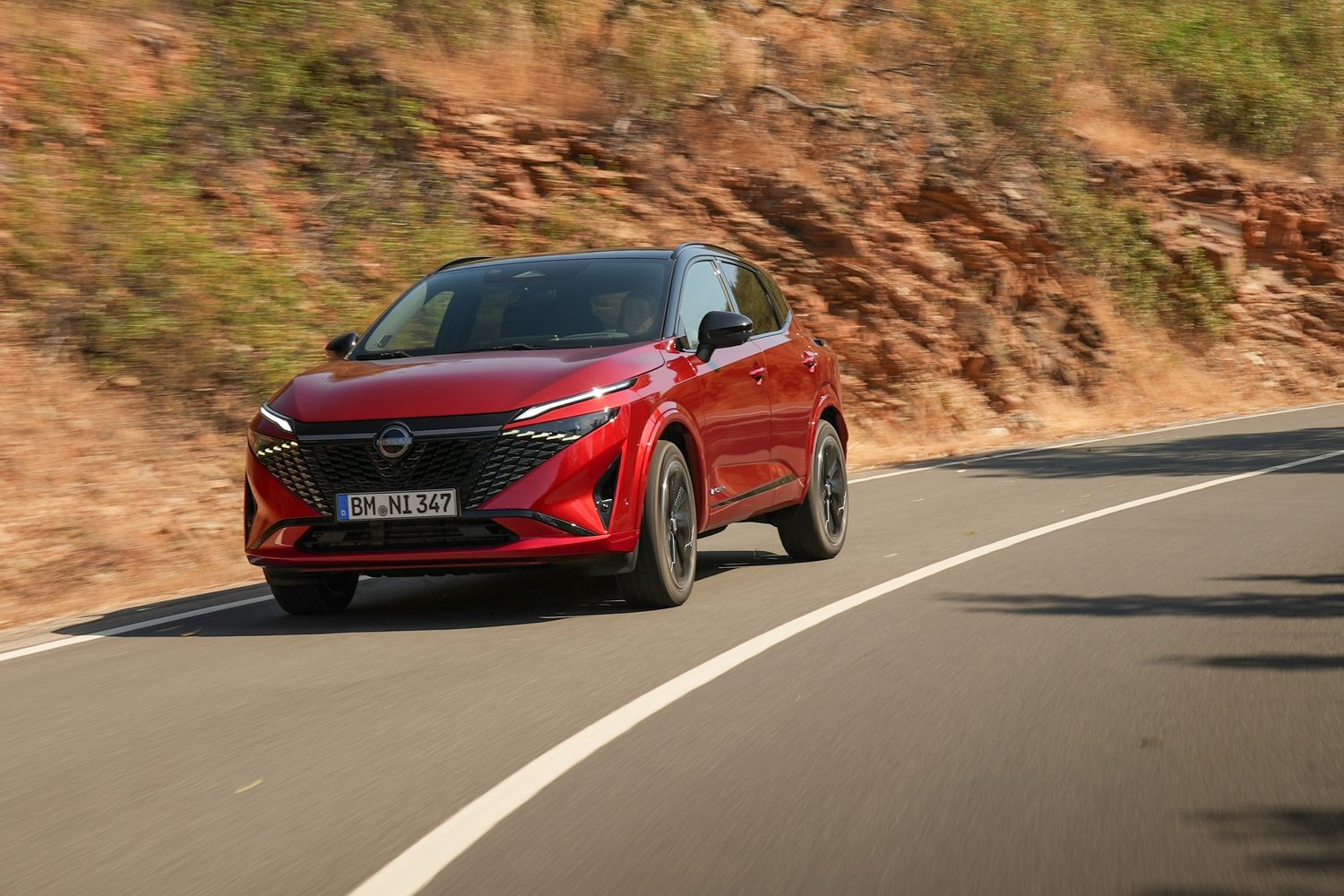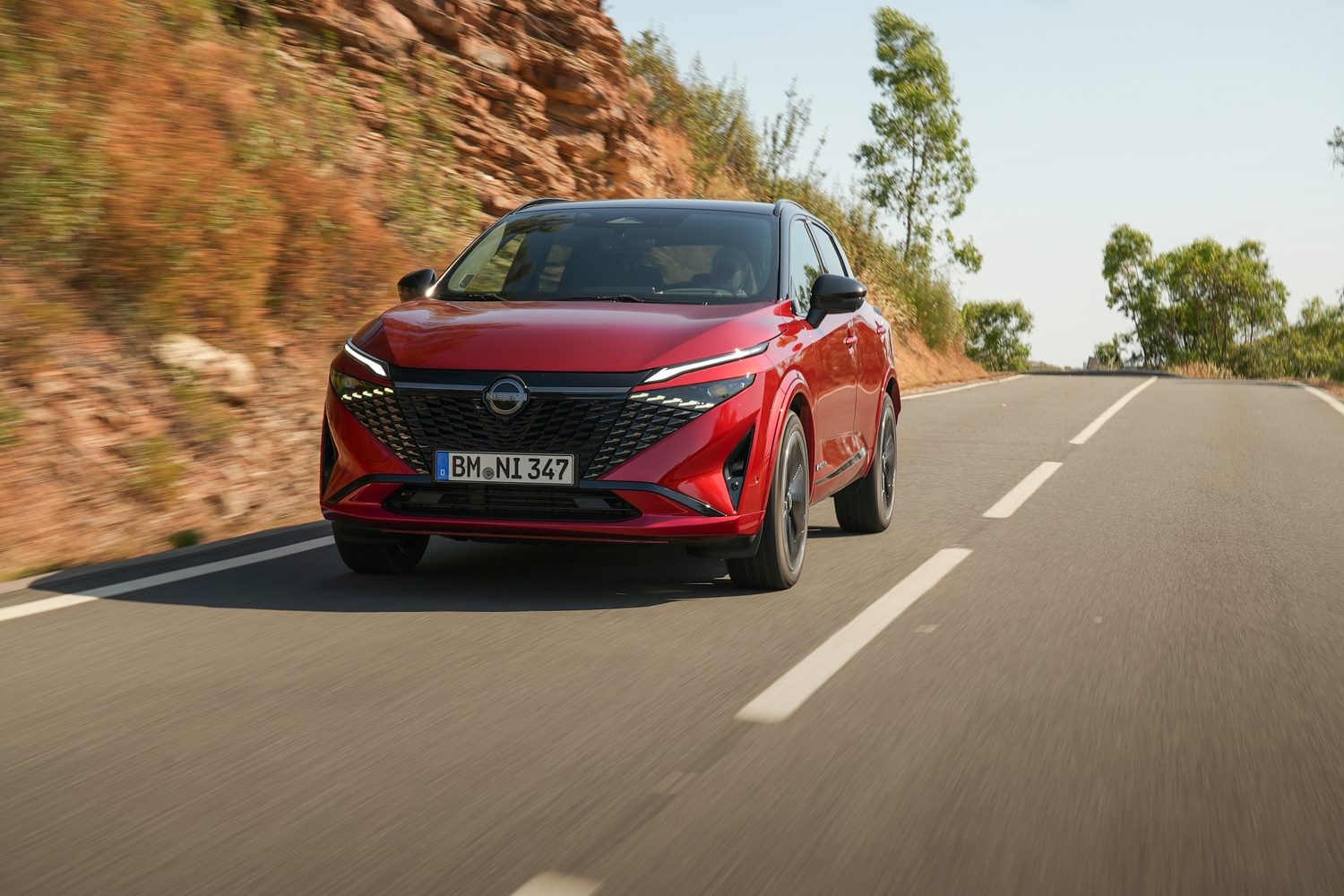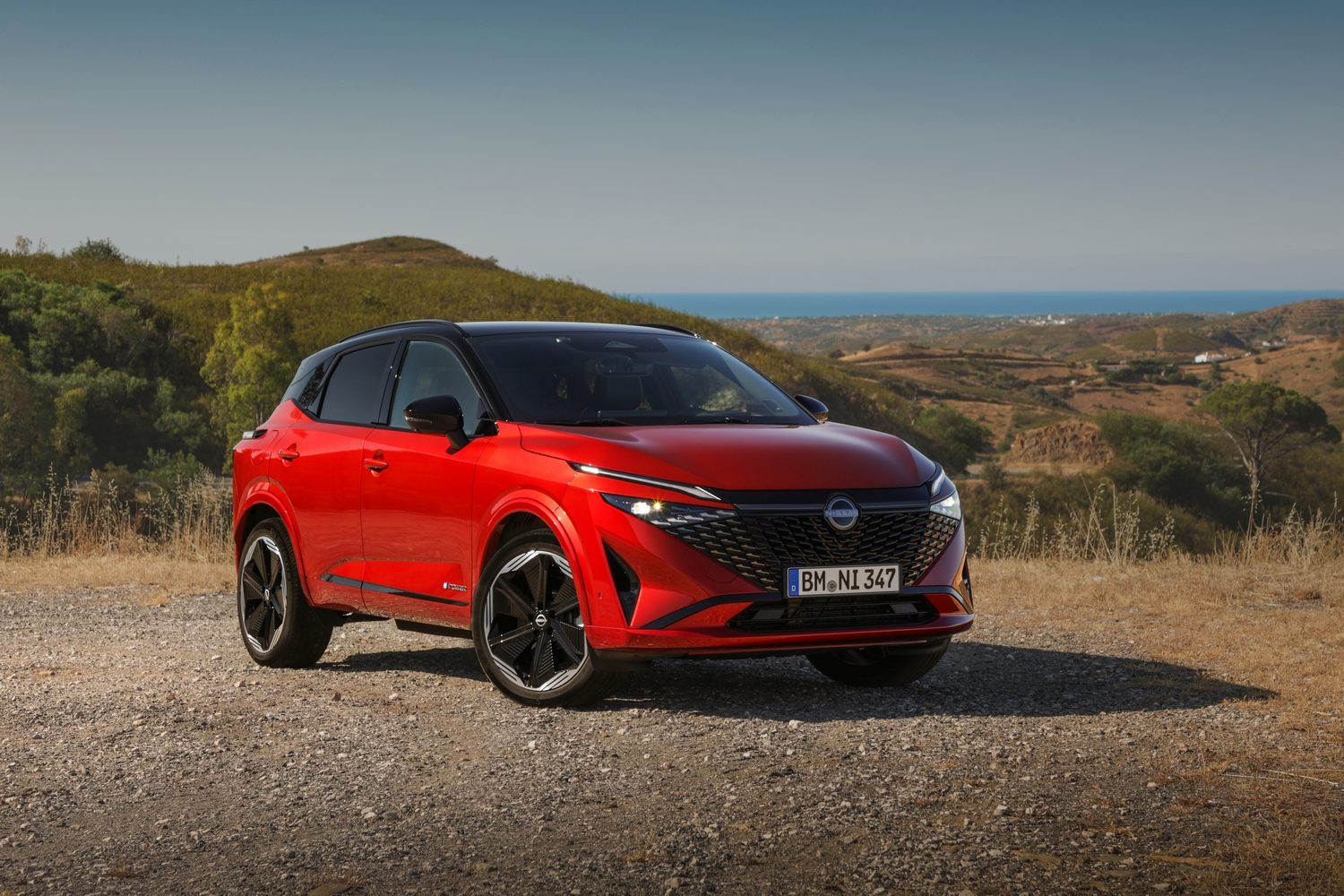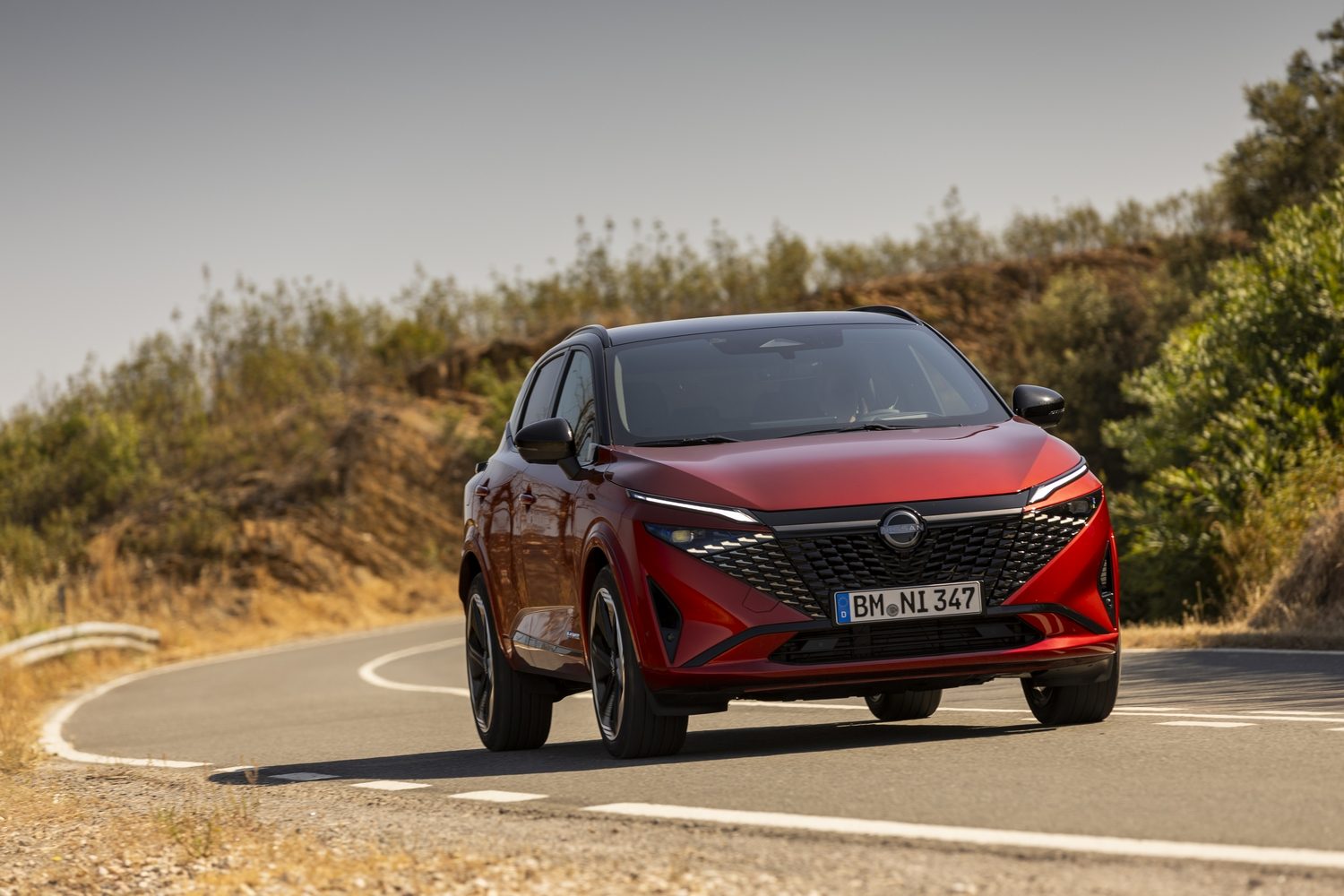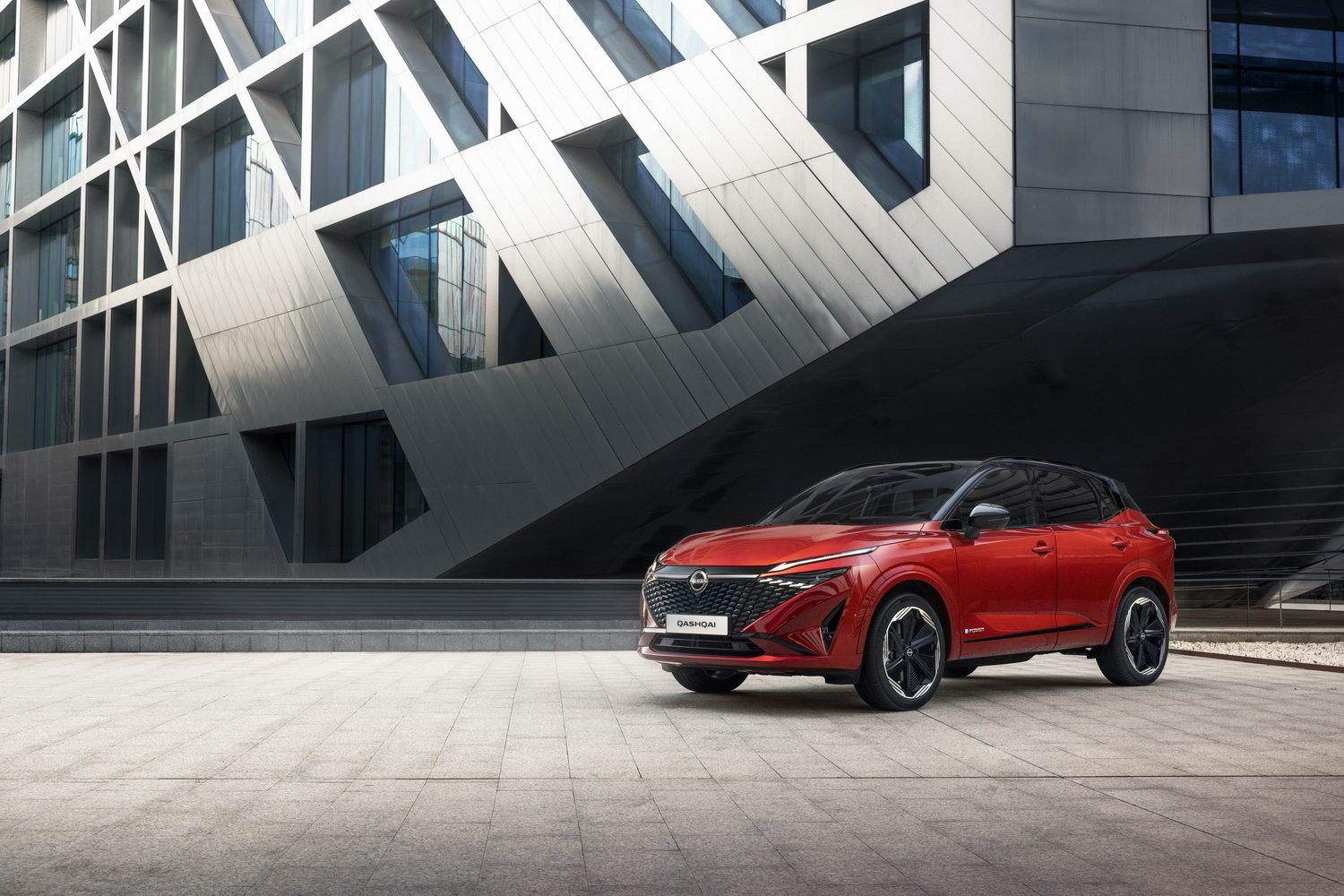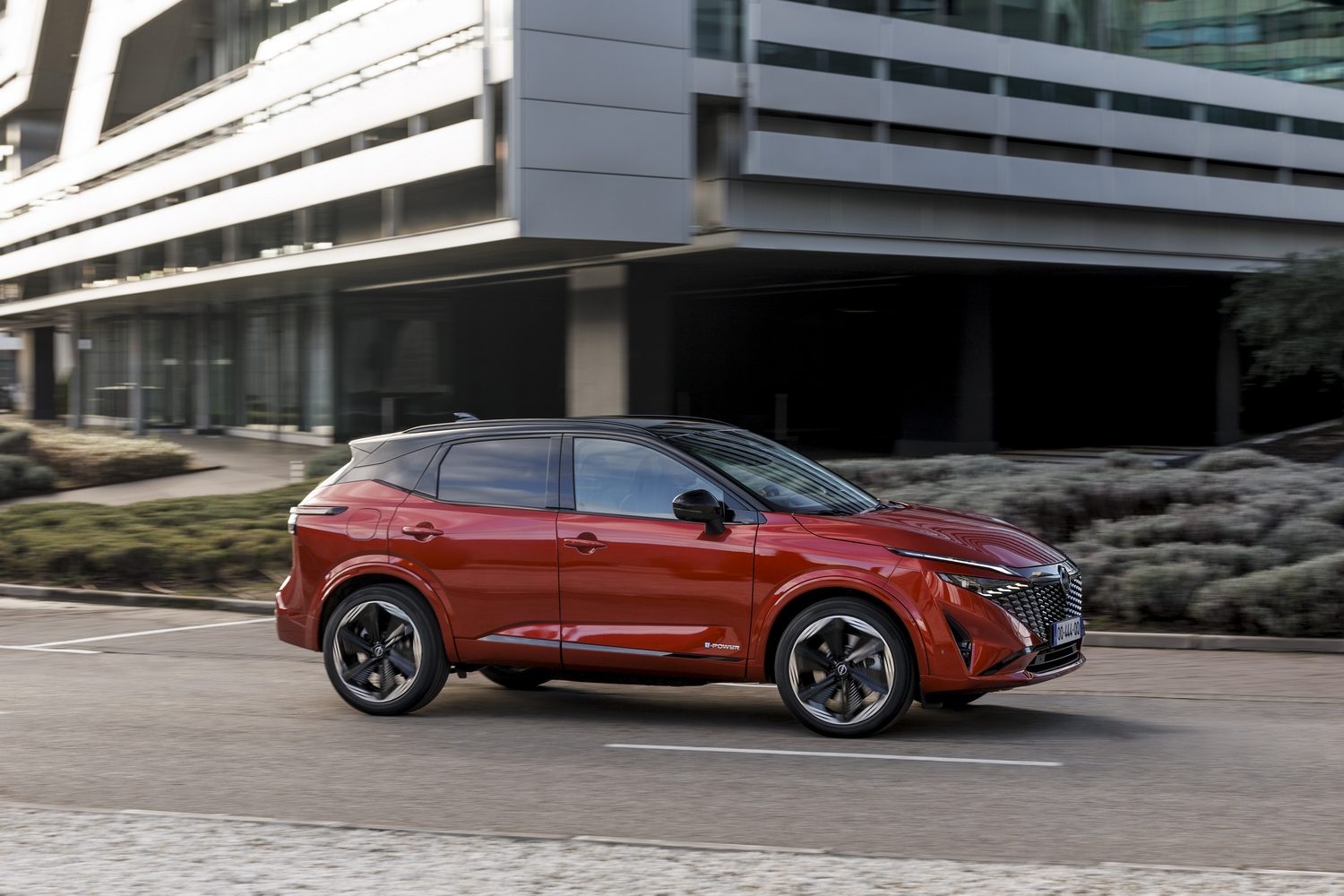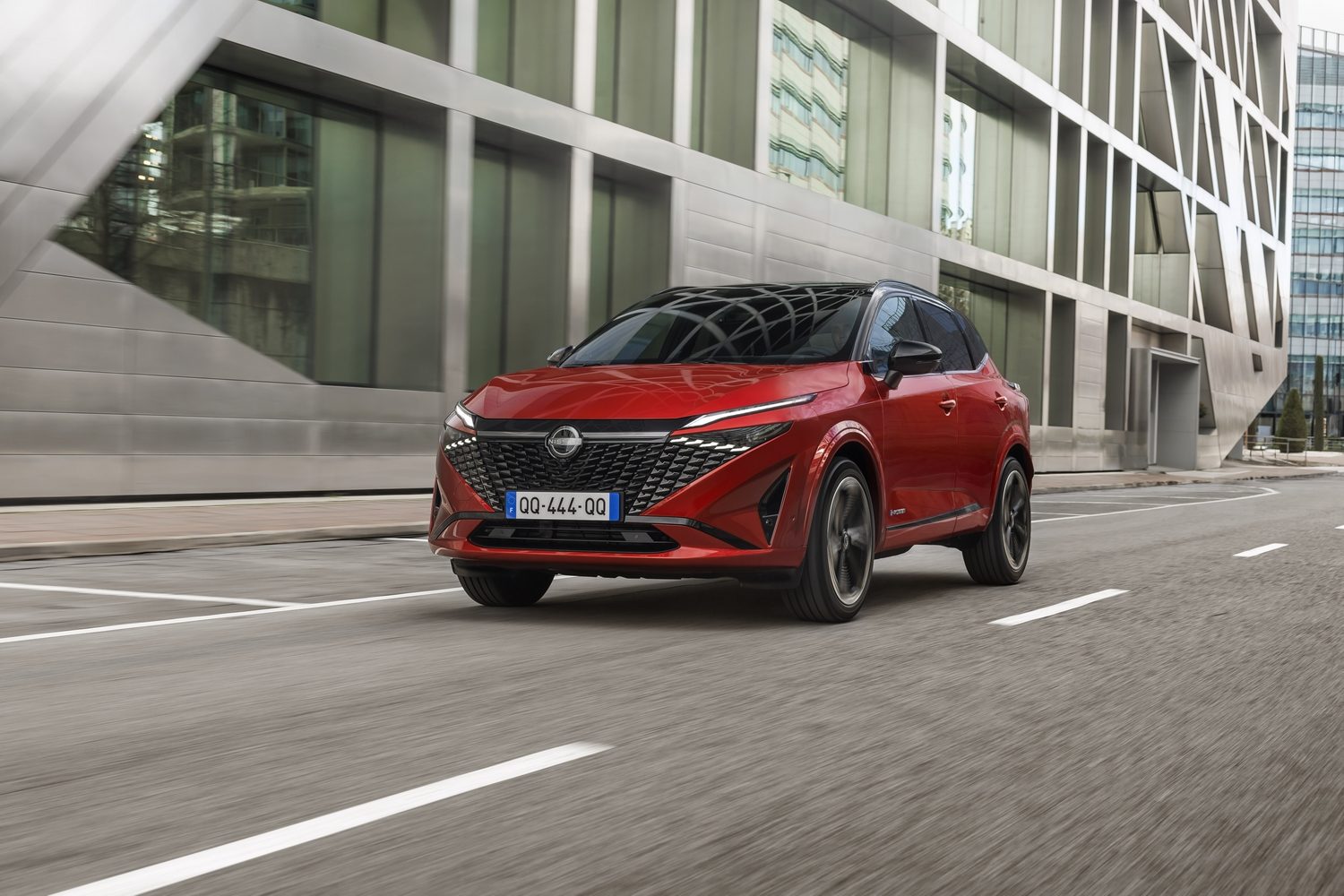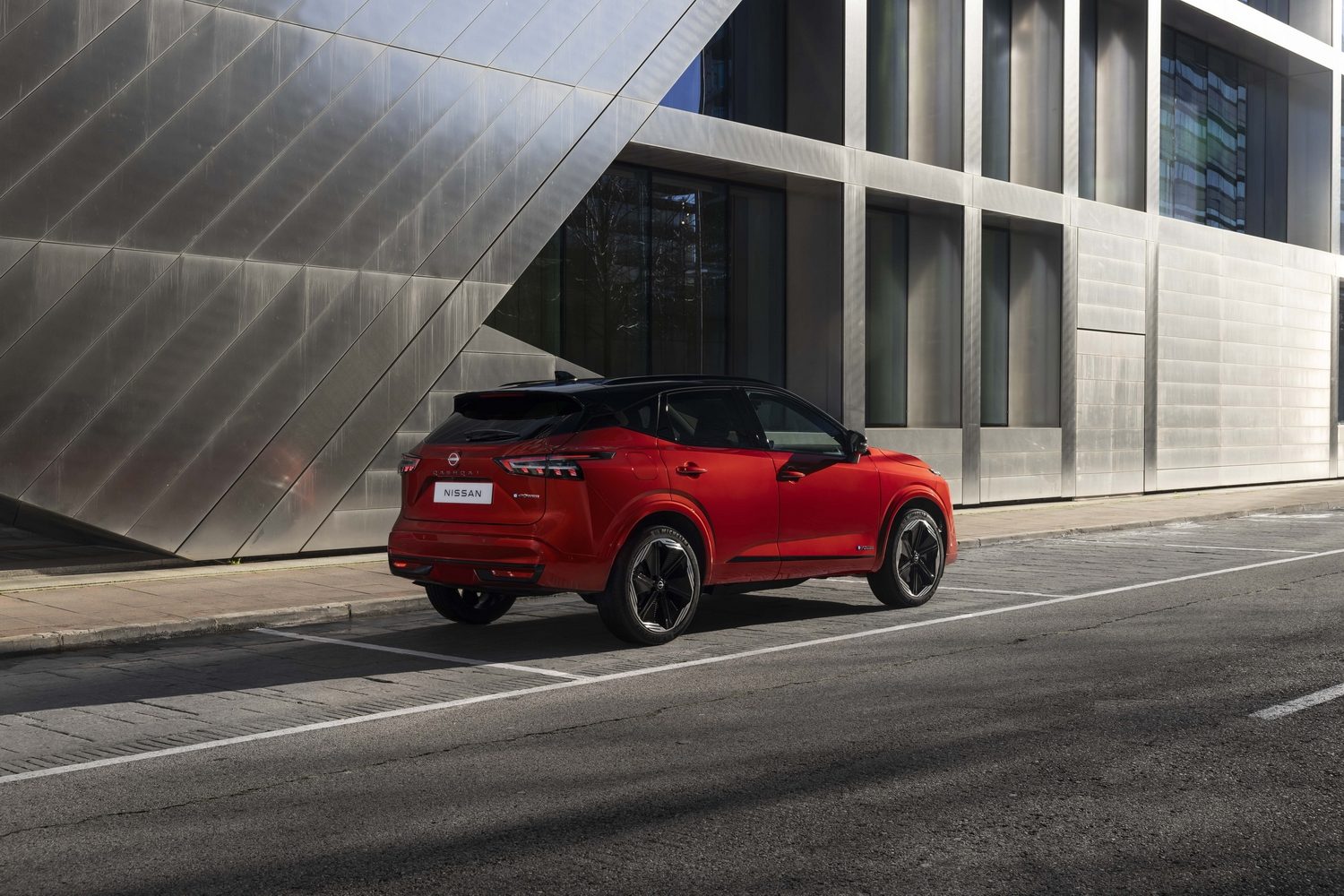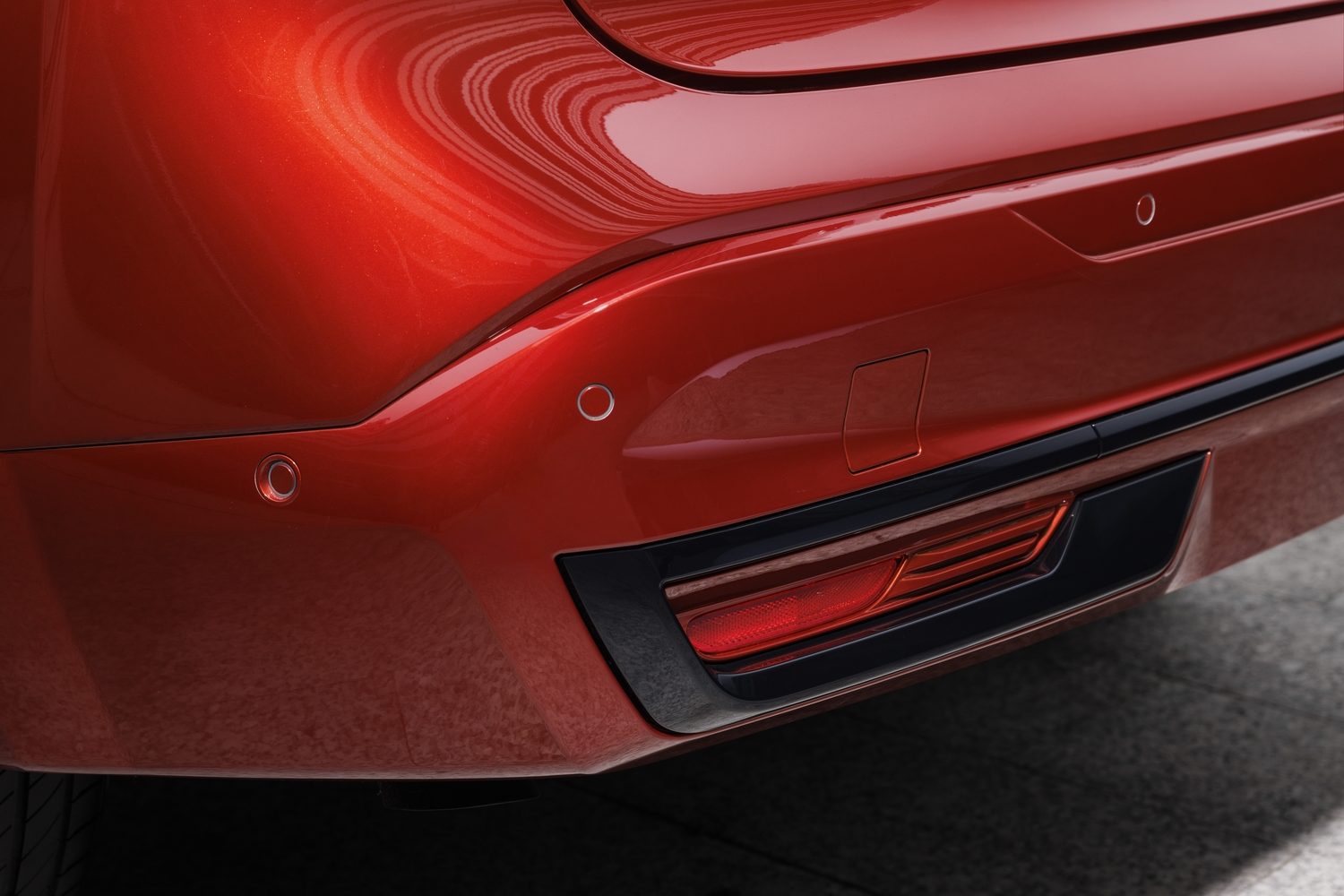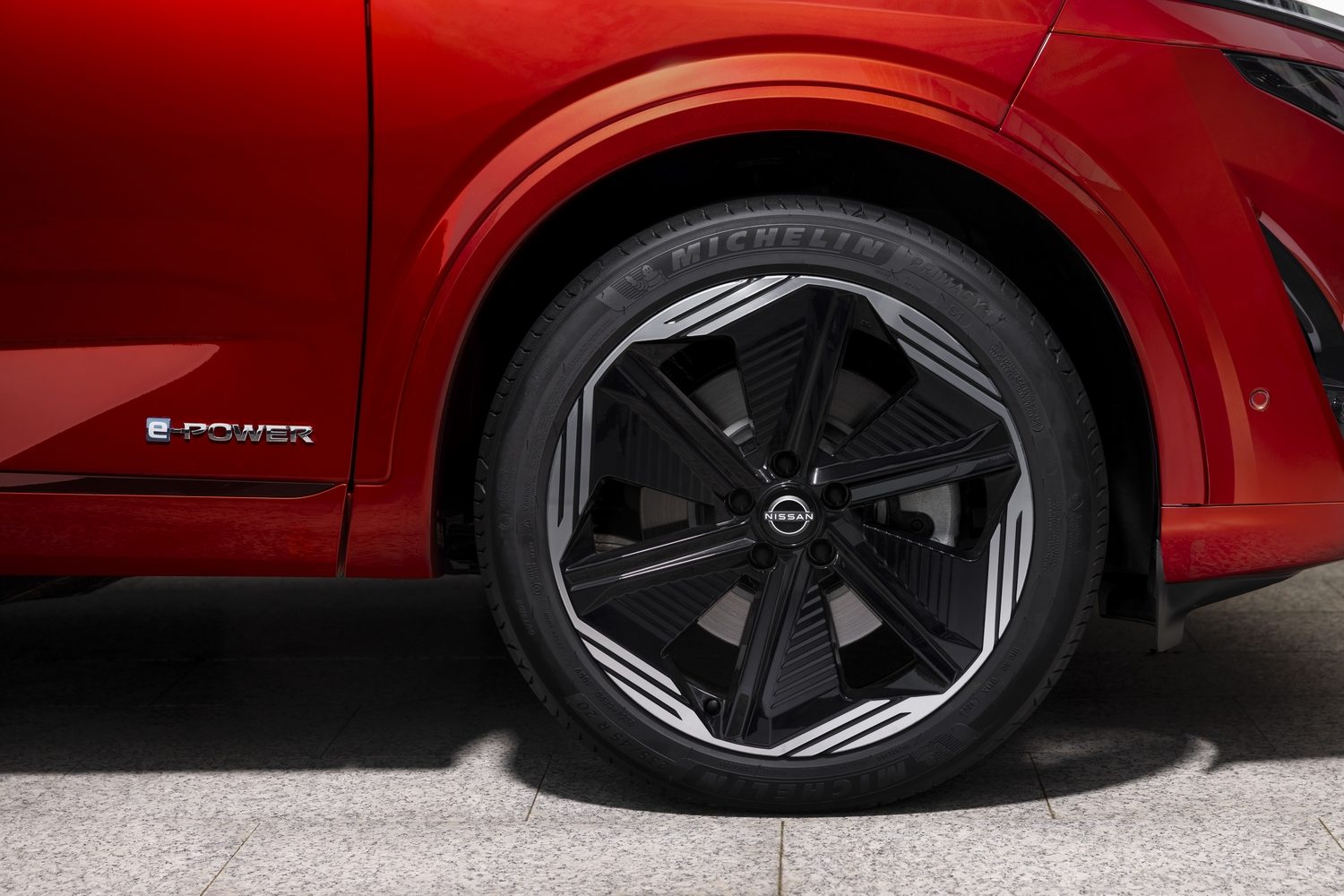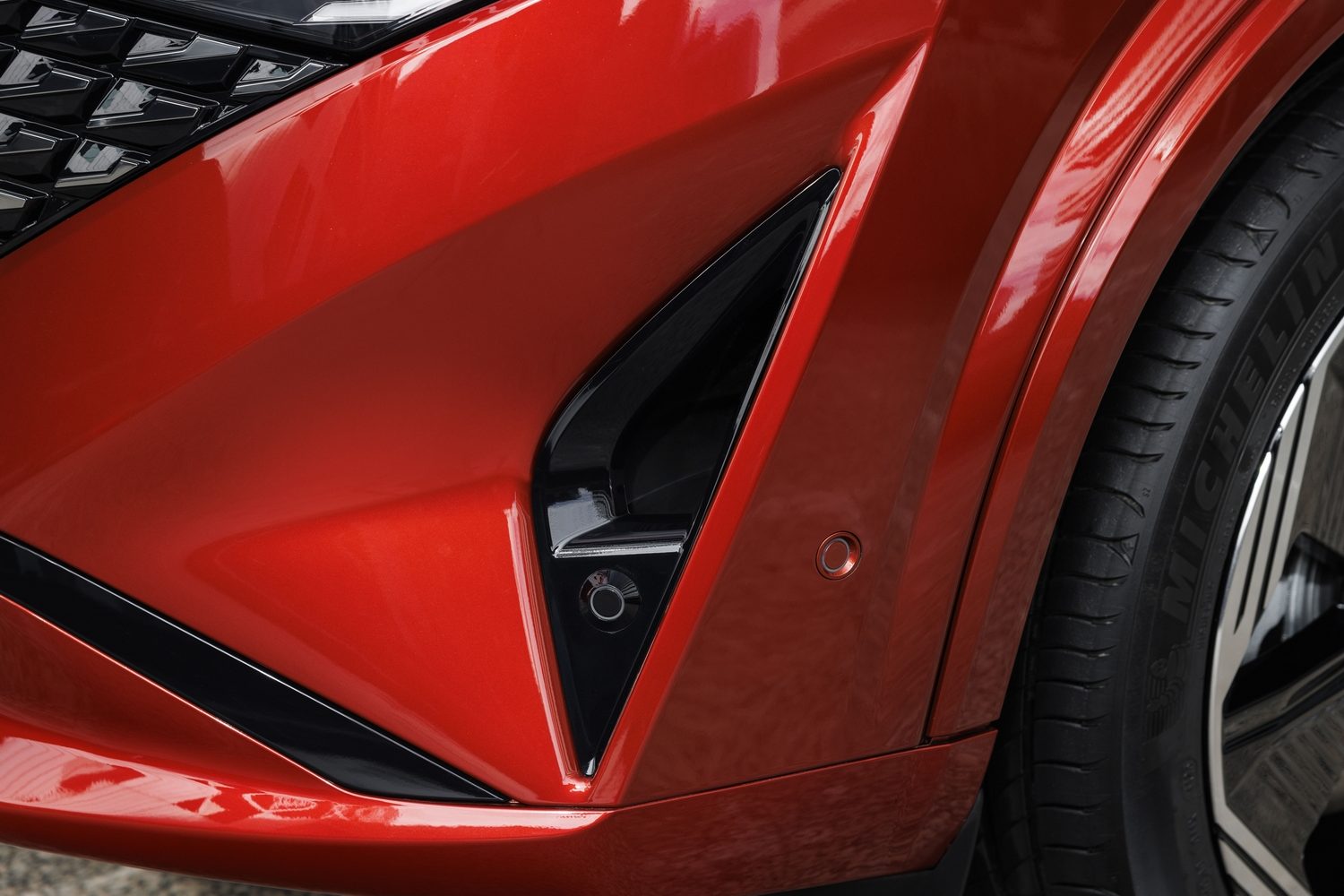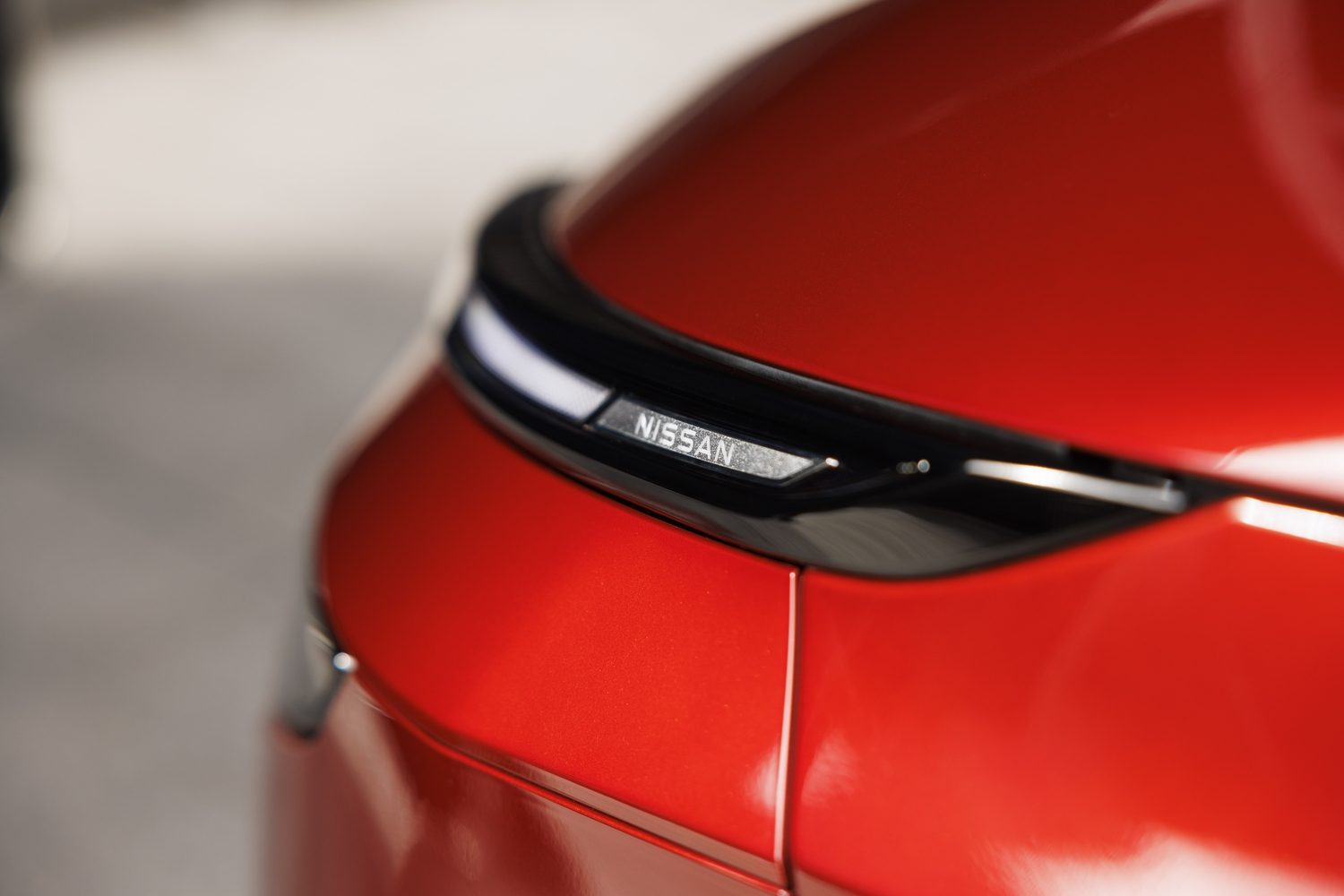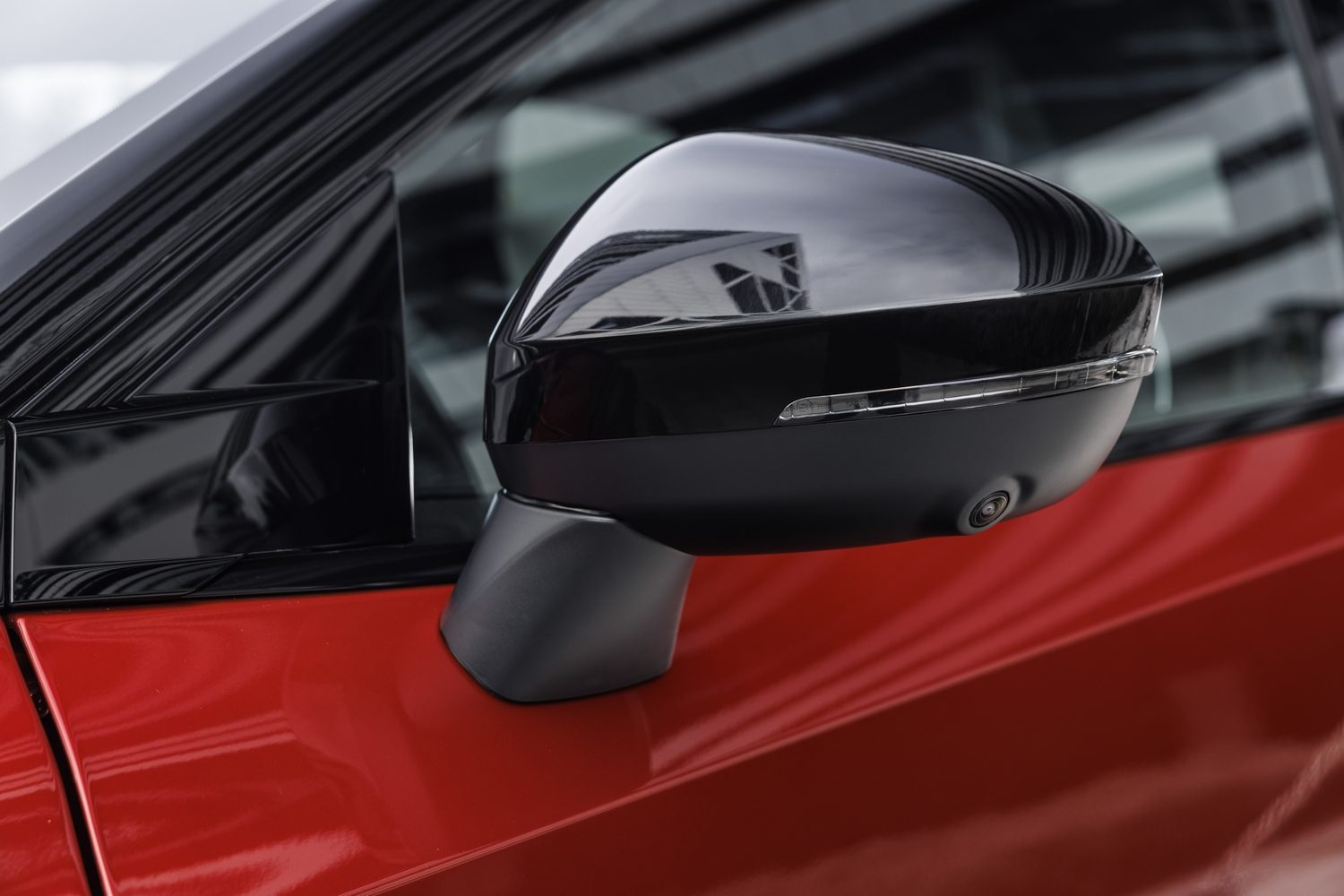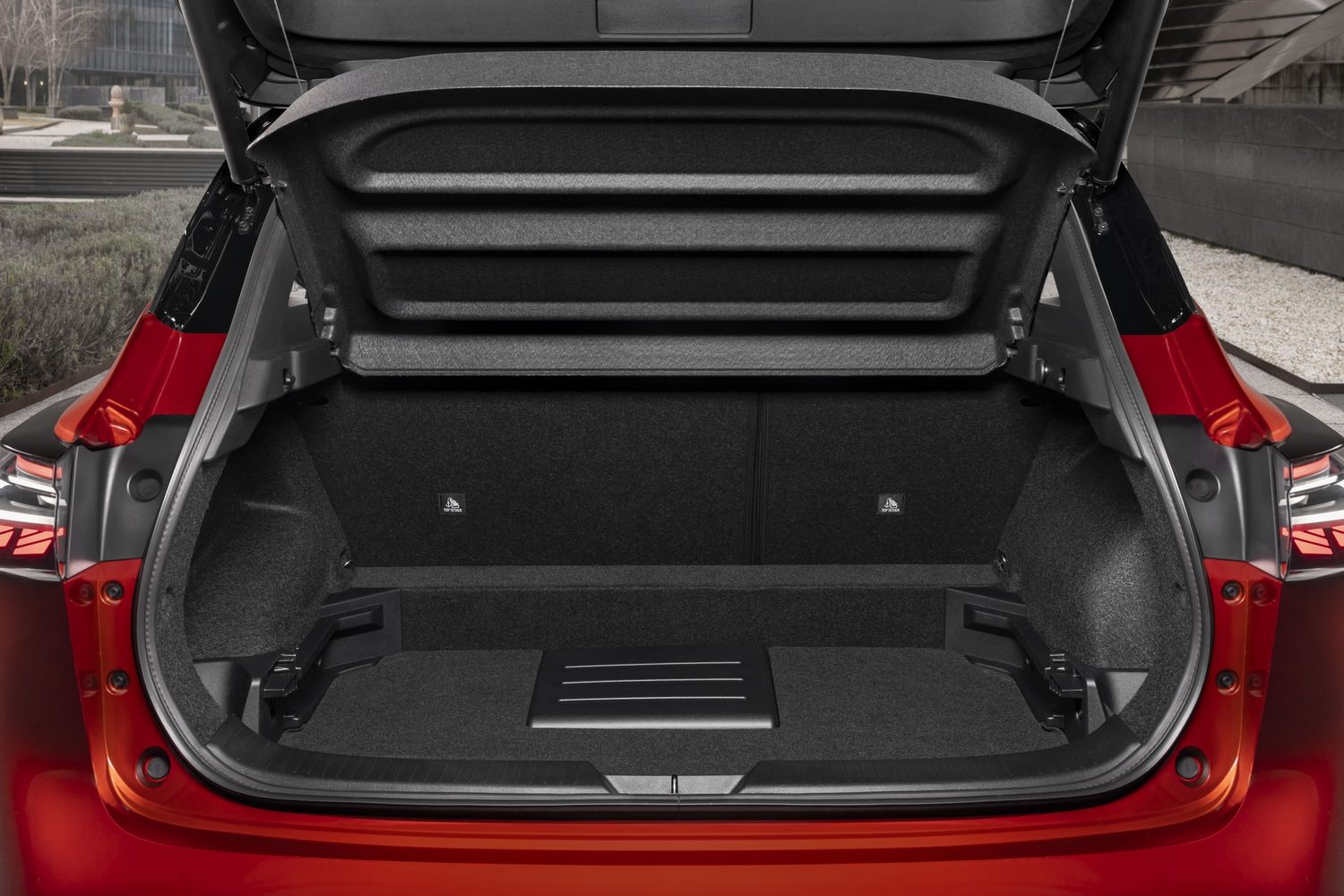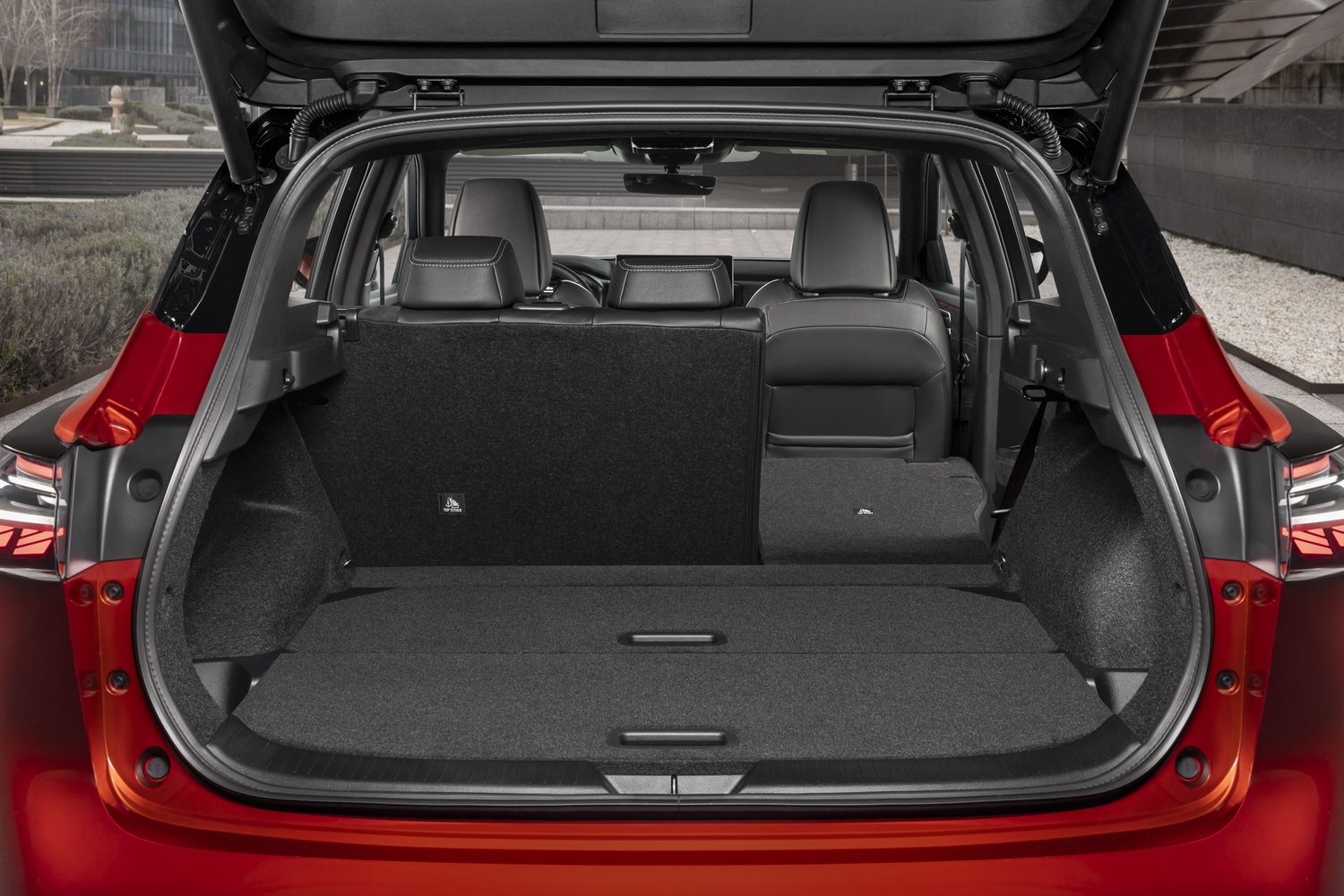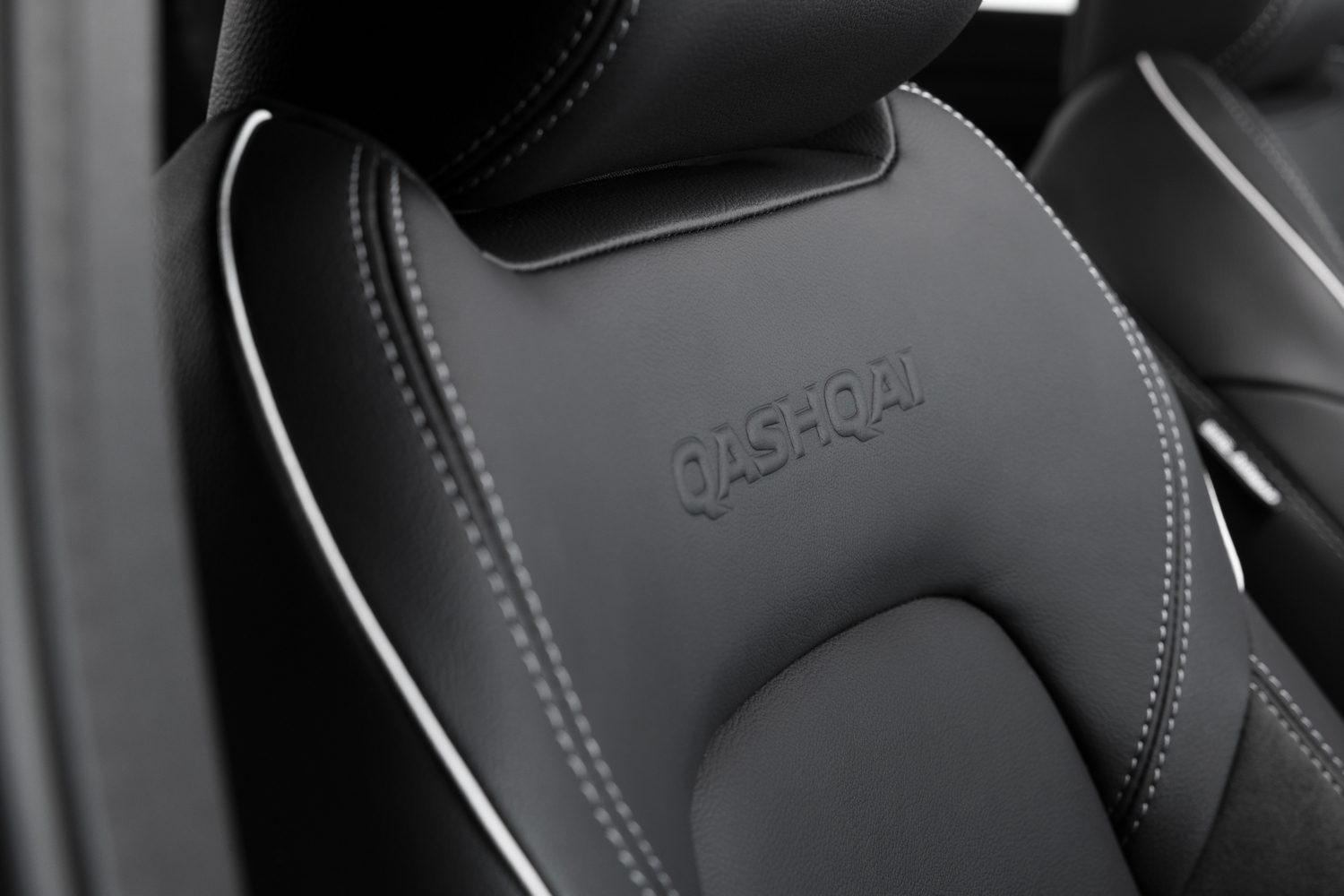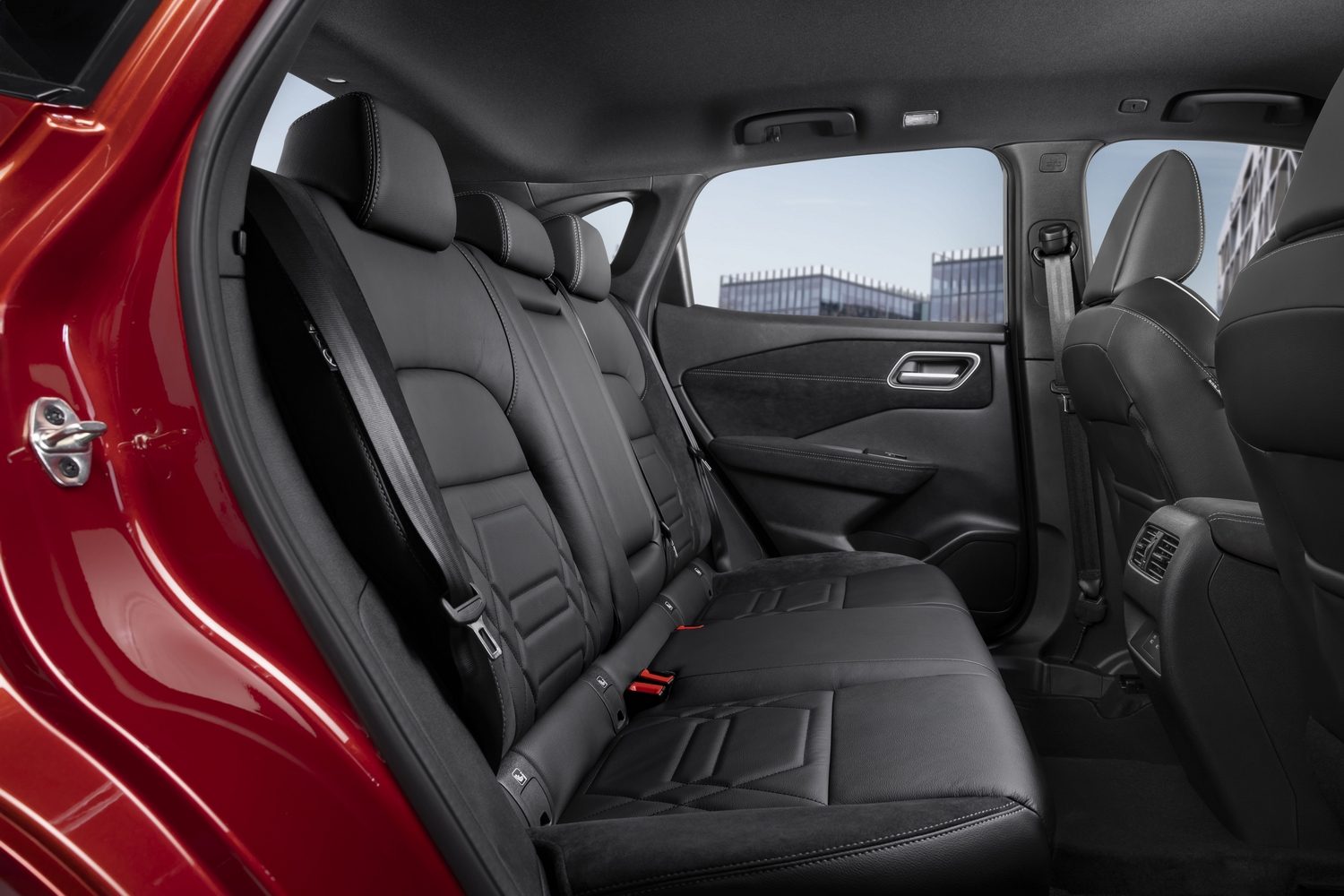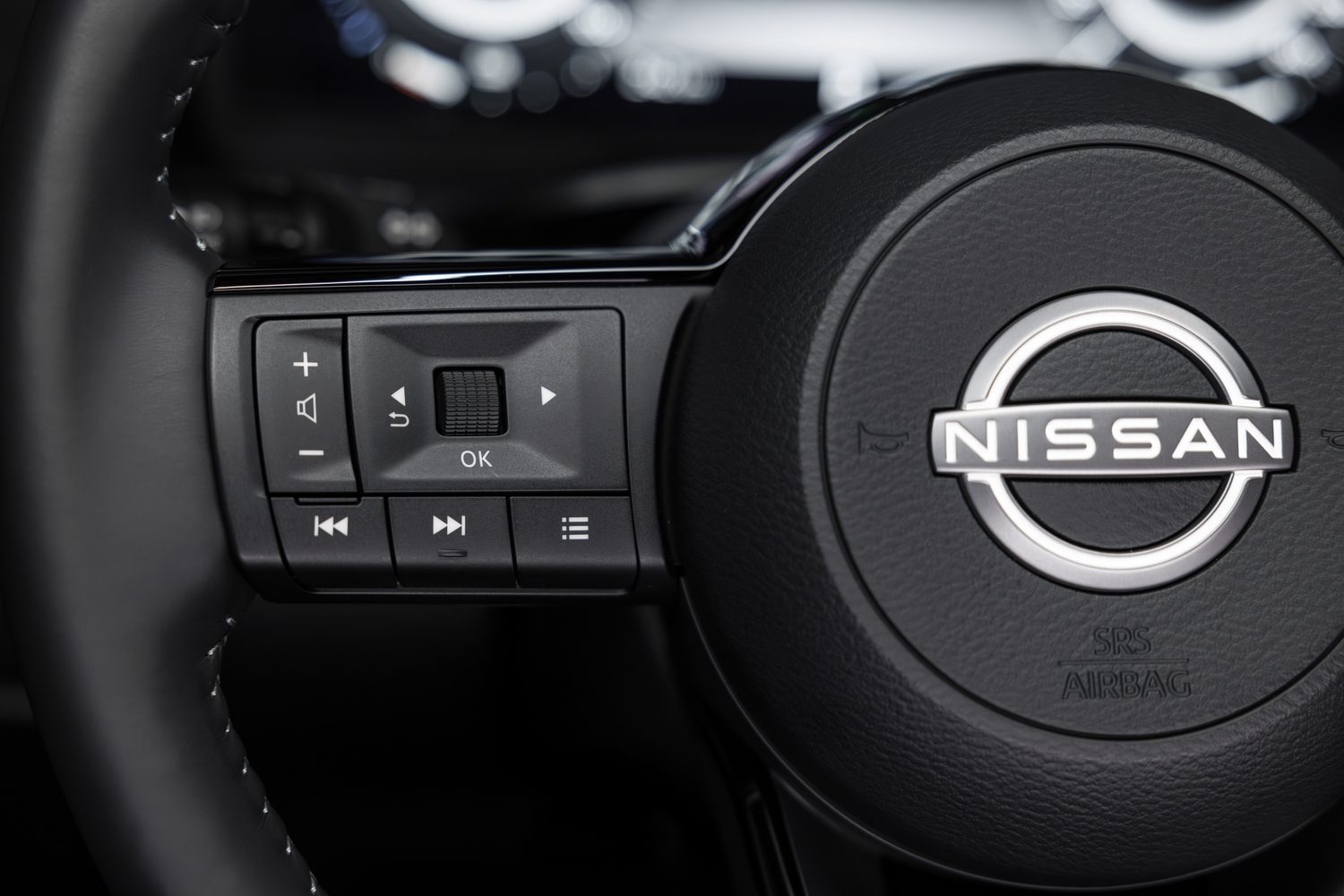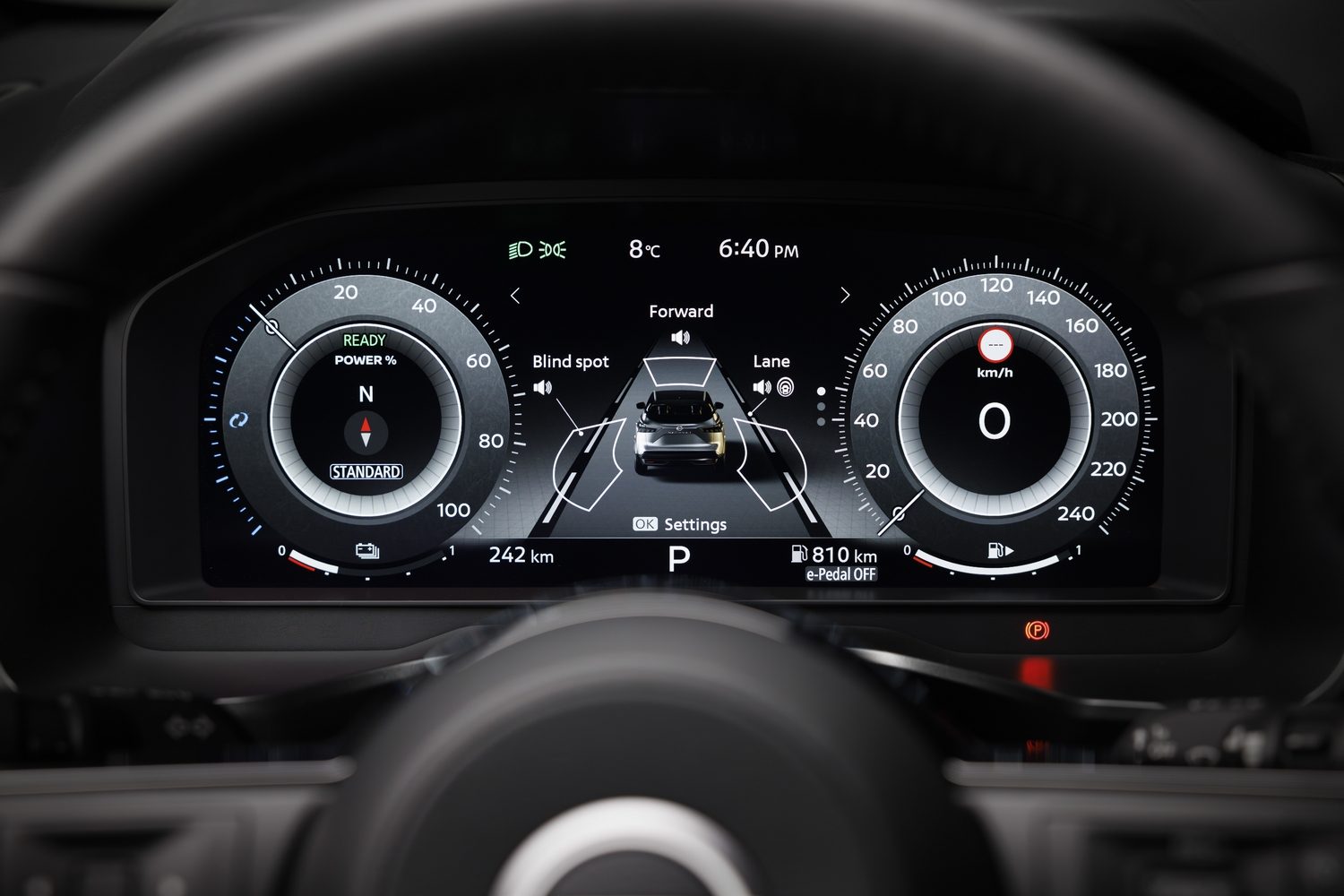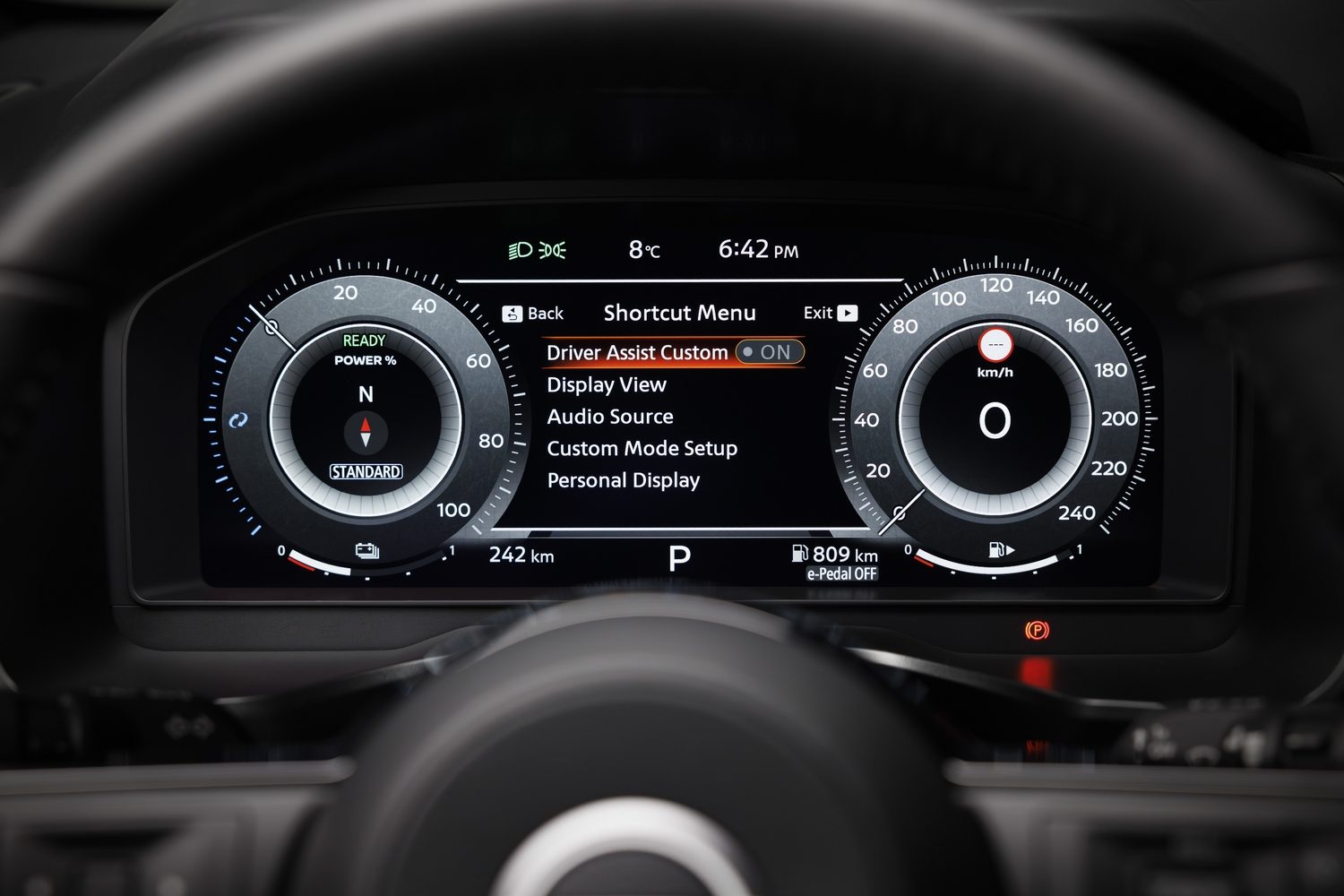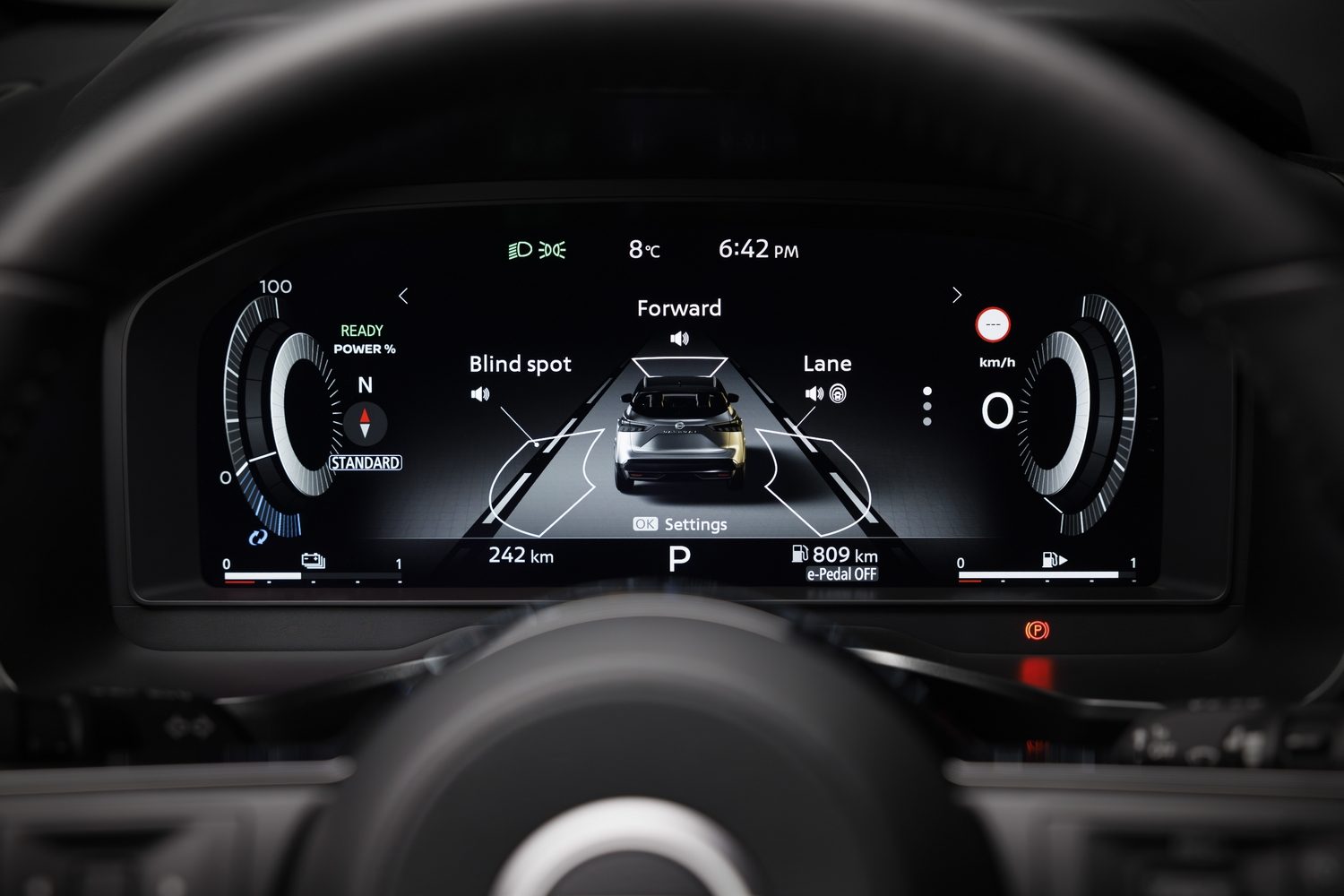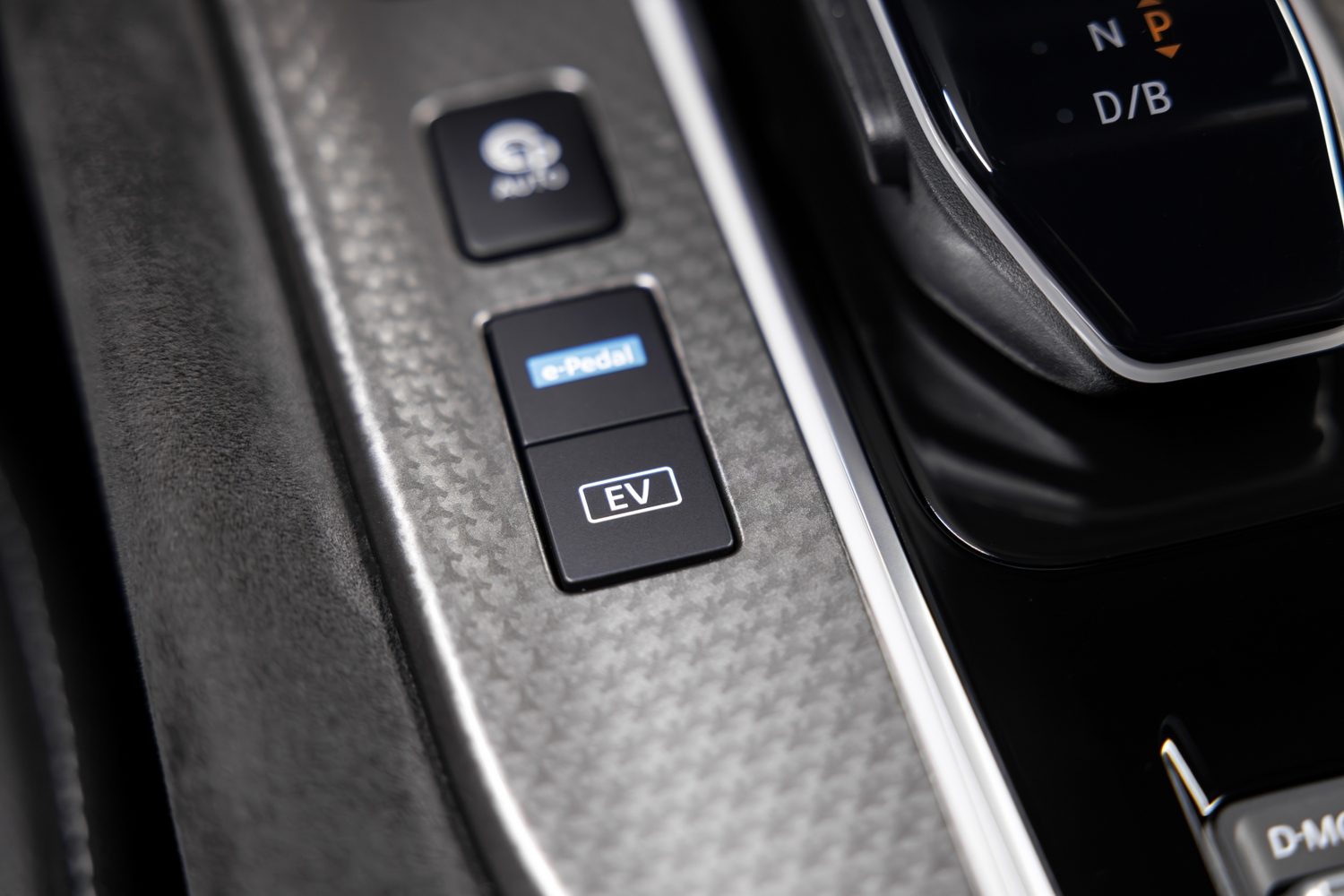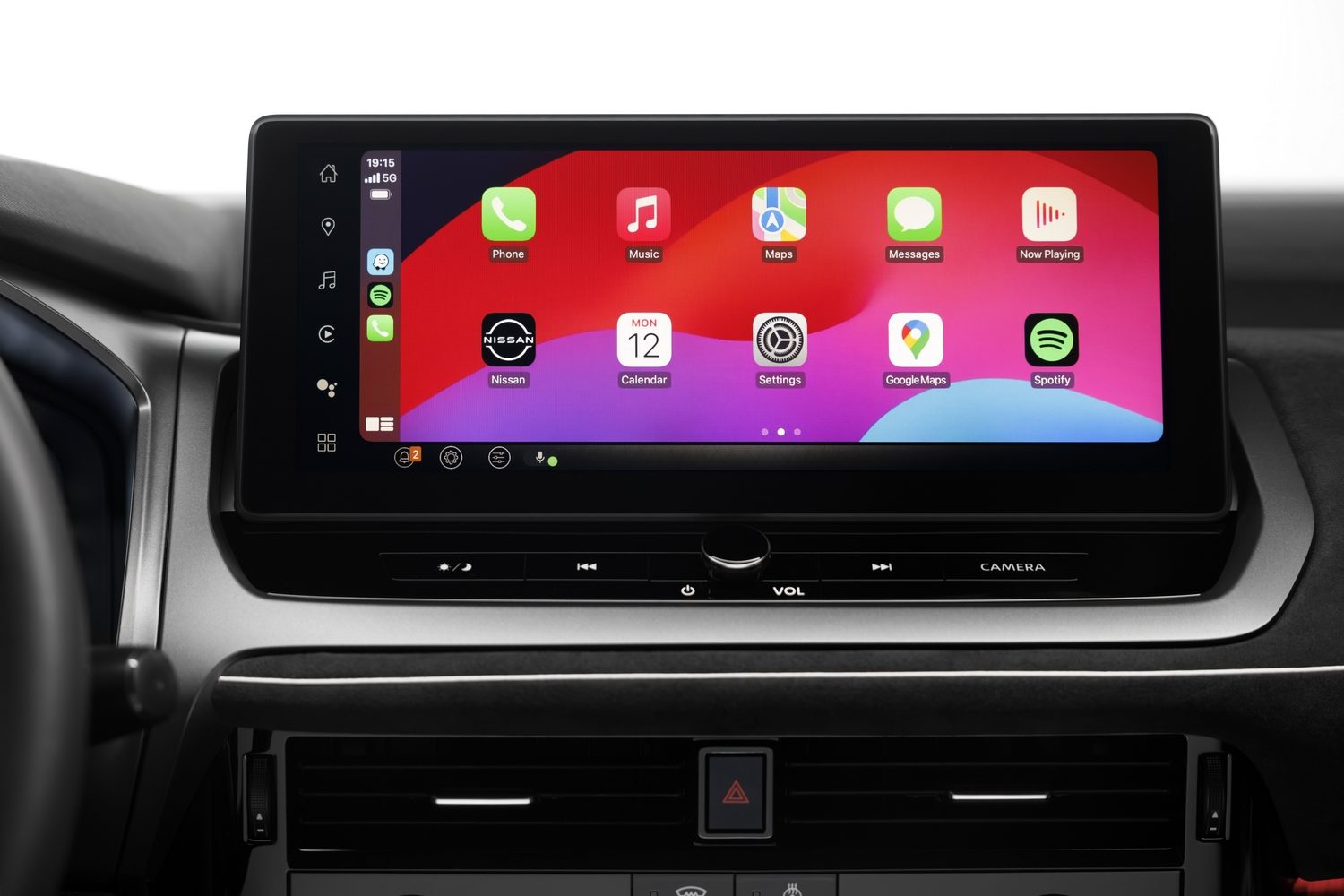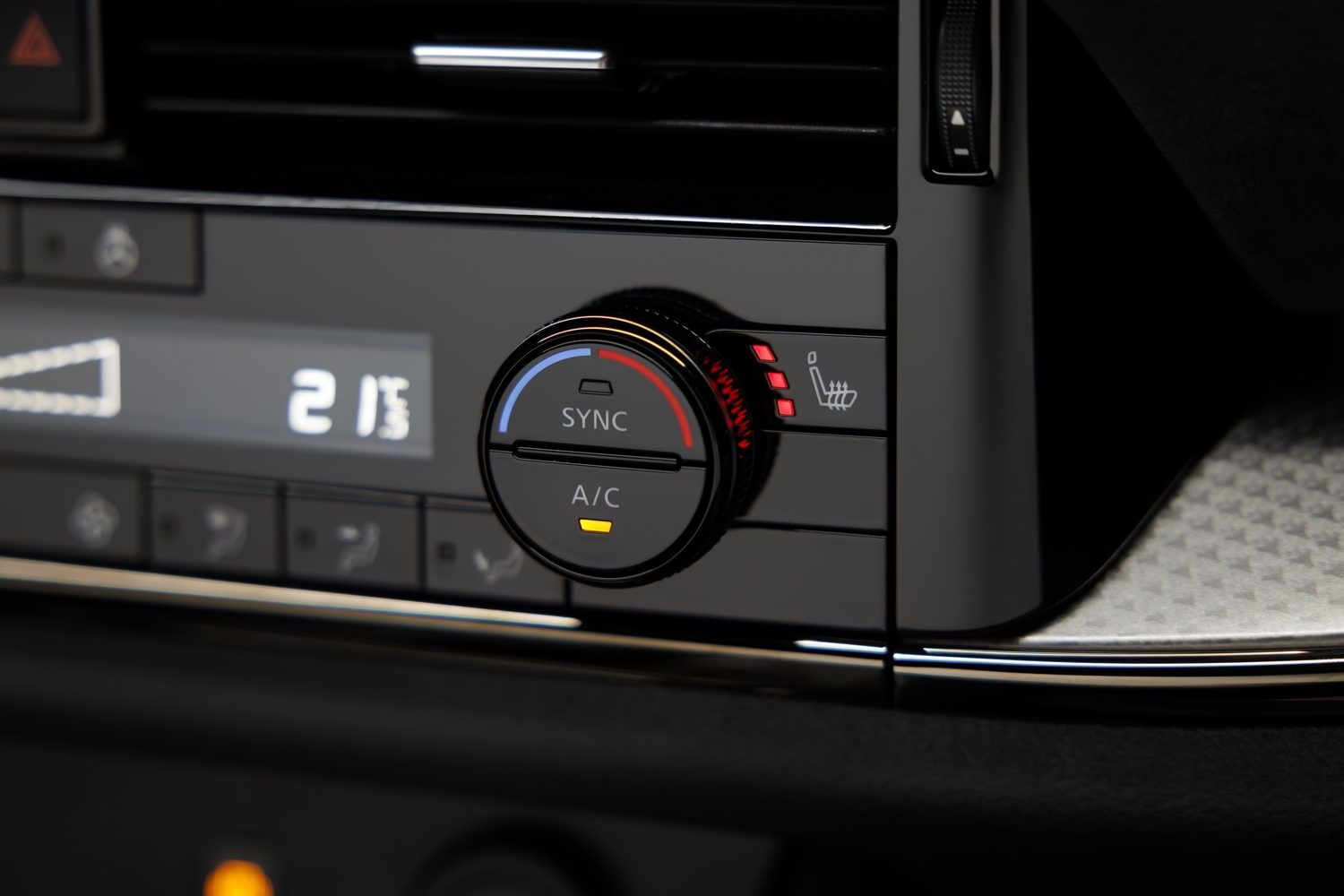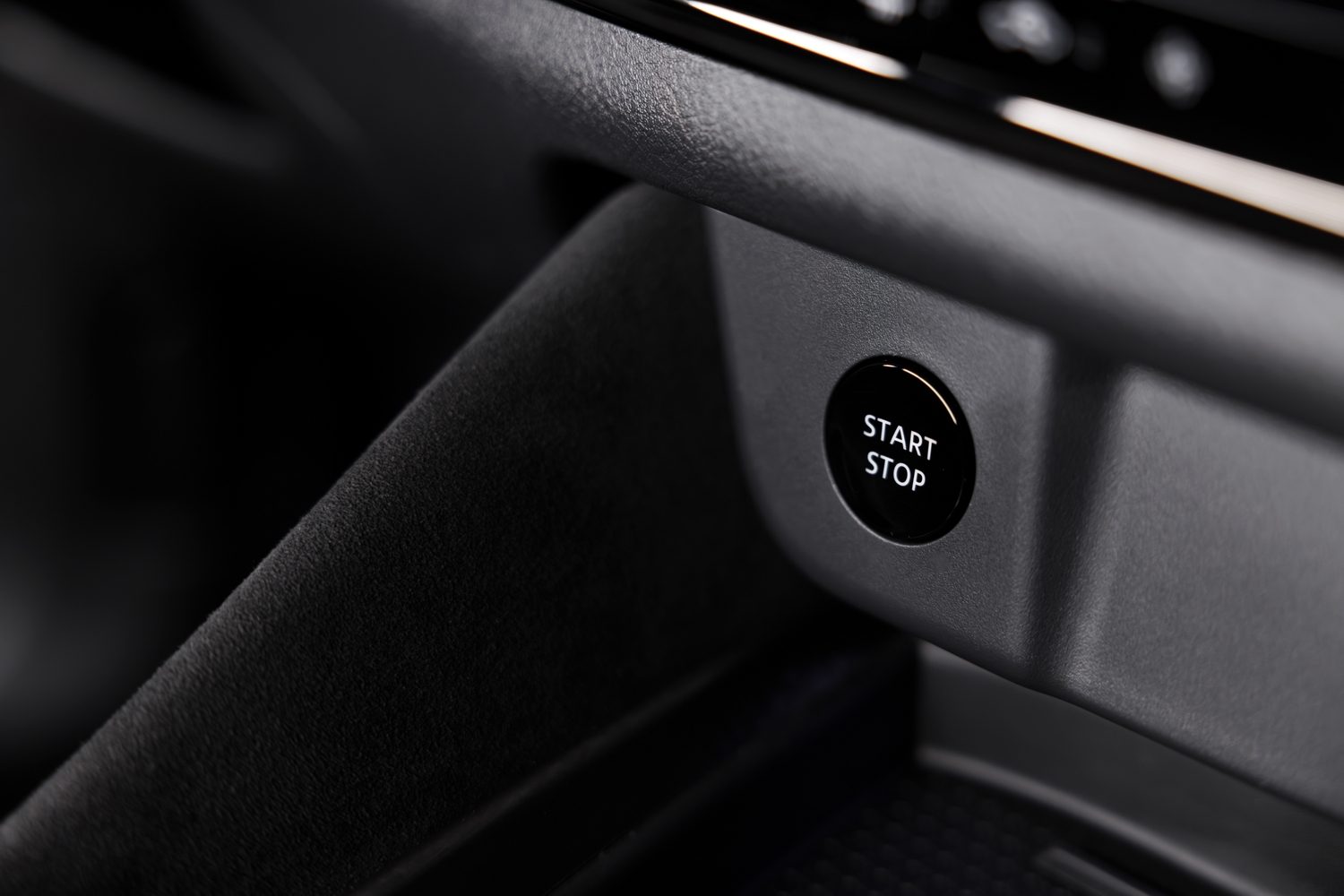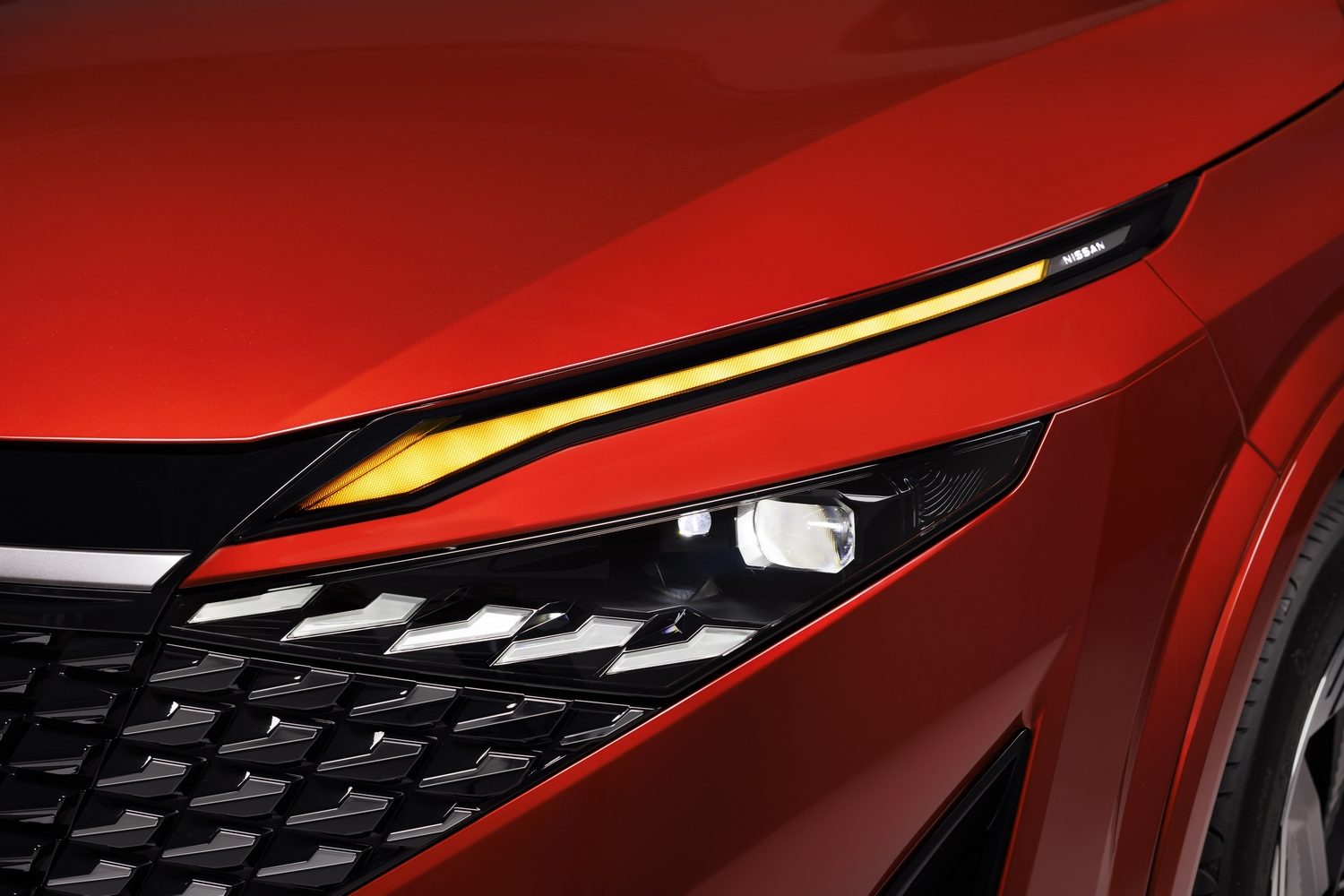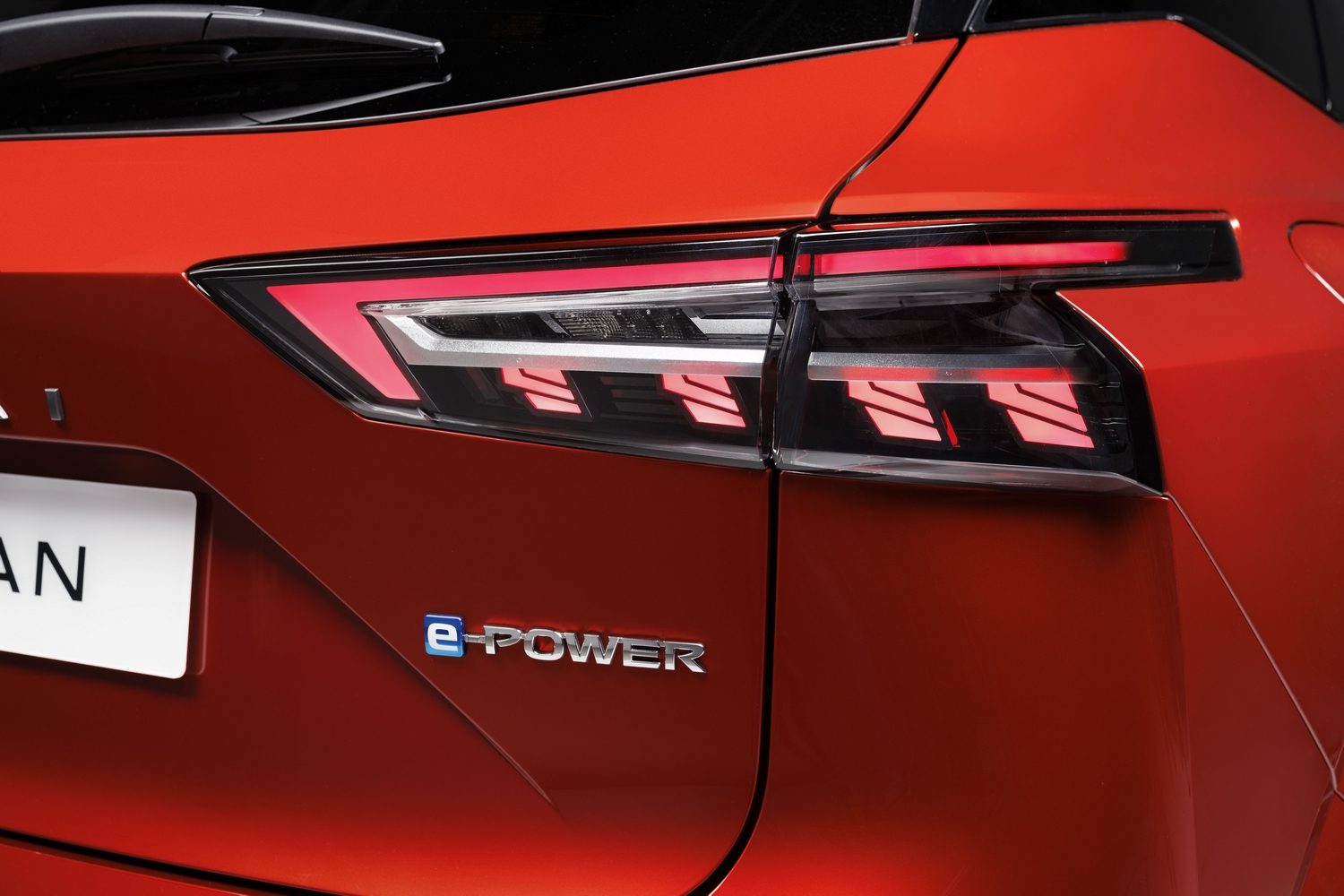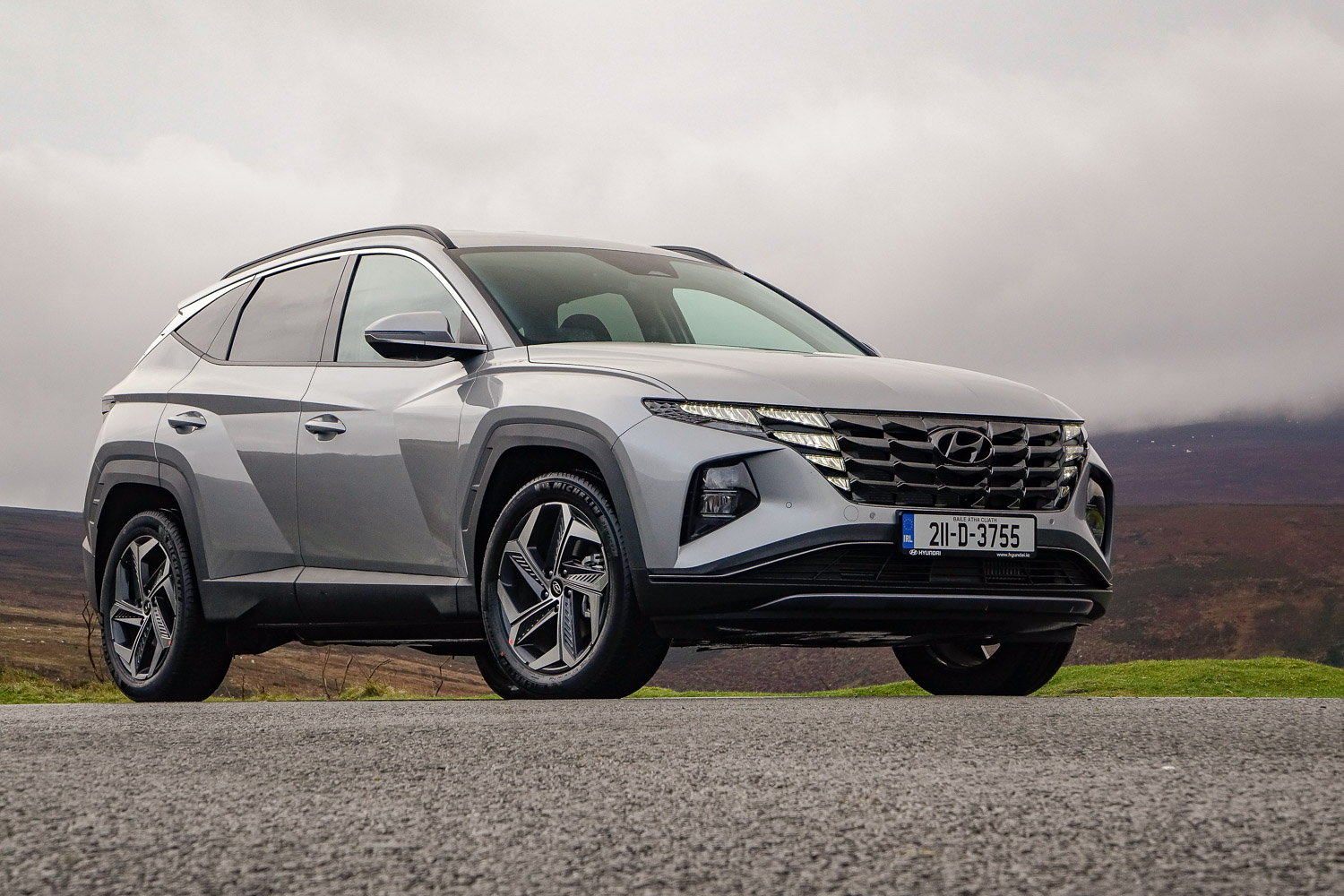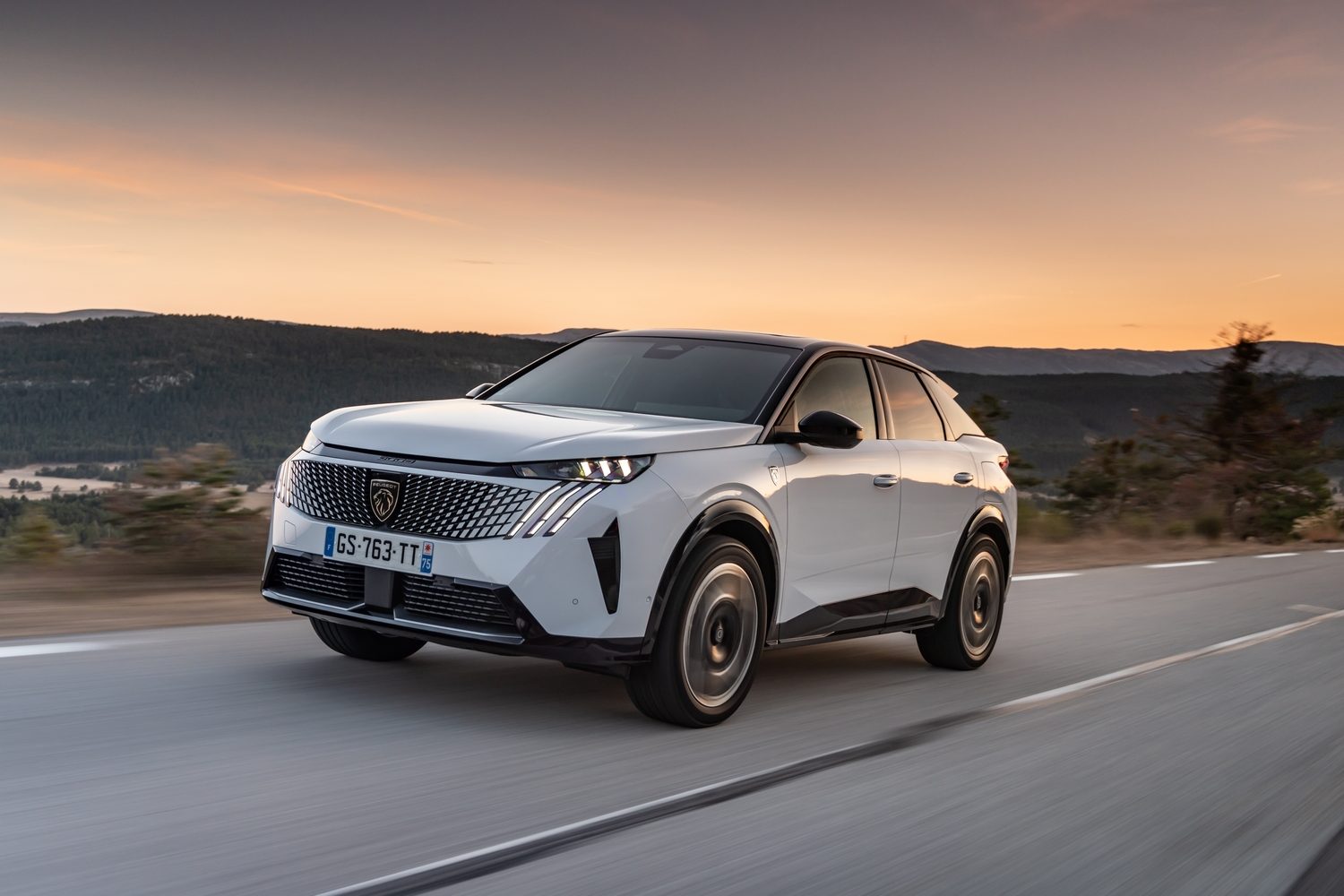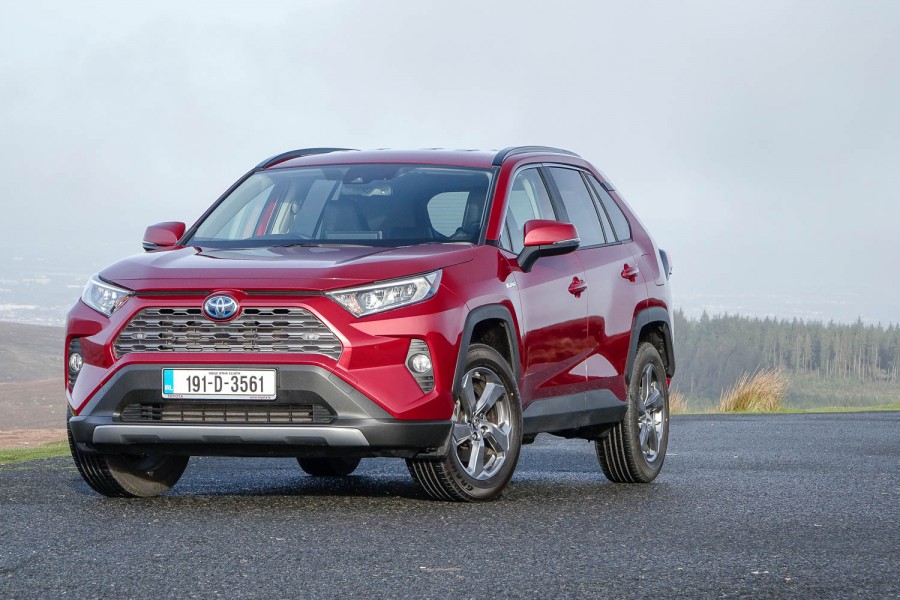The Nissan Qashqai is a showroom monster, hoovering up enormous numbers of sales since its inception. The third-generation car, which launched in 2021, has already found more than 350,000 willing buyers across Europe, so this midsized family crossover-SUV doesn’t require drastic remedial work as part of a midlife update for 2024.
Nissan continues to offer the Qashqai with a 1.3-litre petrol engine using mild-hybrid assistance, but the more interesting option is called ‘e-Power’. This hybrid technology is supposed to offer all the driving benefits and characteristics of a full electric vehicle (EV), only without the need for ever plugging the car into the mains to recharge, as an onboard petrol engine operates as a generator.
Changes for the facelifted Qashqai amount to little more than revised exterior looks, the addition of Google technology for the onboard infotainment and some different interior trim finishes.
Our first experience of the updated Nissan Qashqai is on Portuguese roads at its European launch.
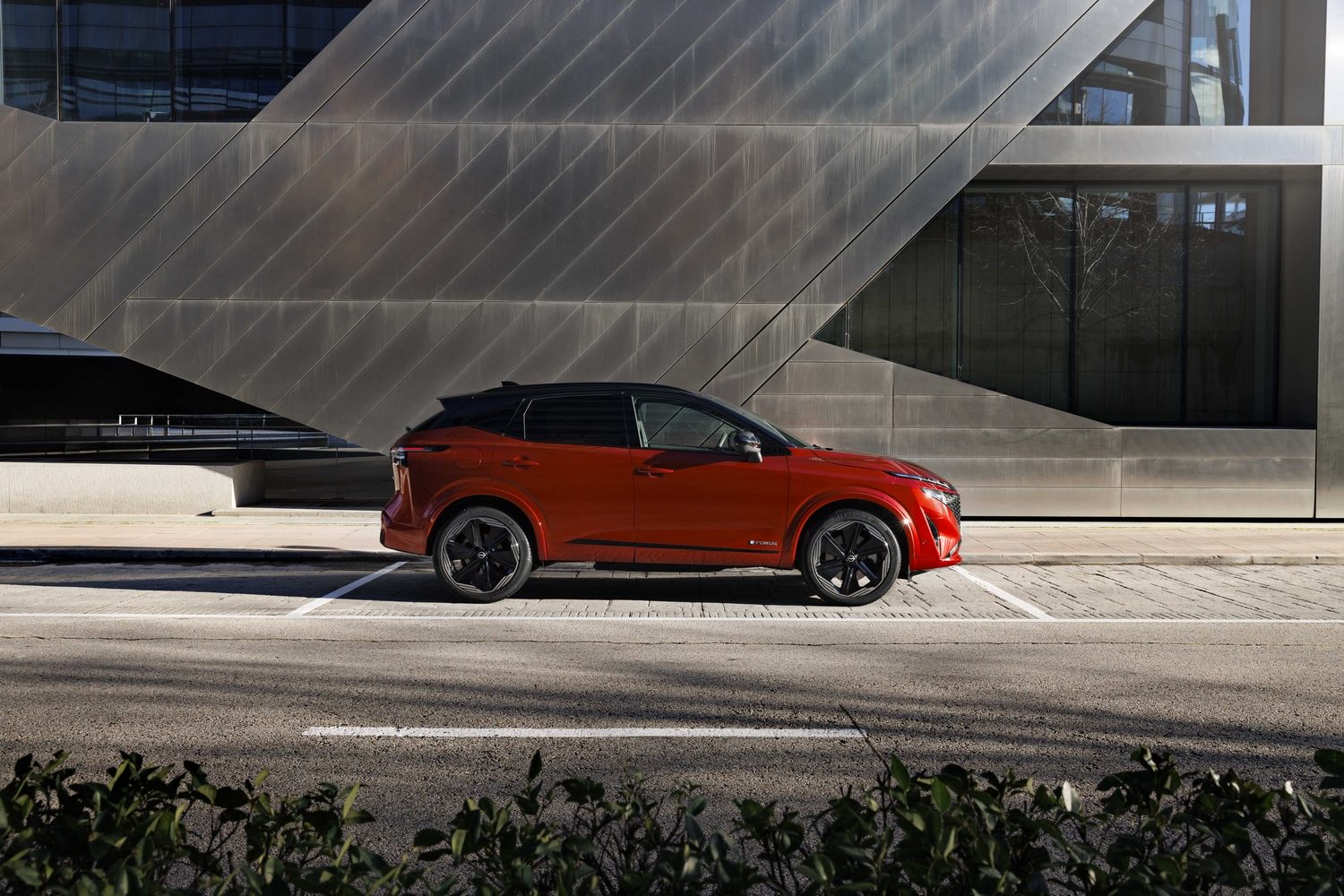
How much is the 2024 Nissan Qashqai?
Irish prices for the updated Qashqai start at €39,900 for the 1.3-litre ‘mild-hybrid’ model in entry-level SV trim with a manual gearbox. With an automatic it’s €43,400, so the jump up to €45,000 for the more powerful, more efficient e-Power variant isn’t bad at all.
Even that base SV car gets a little more equipment than before, while buyers can up the level of specification through SV Premium and SV Tech lines to the range-topping SVE which is pretty much loaded to the roof with all available options.
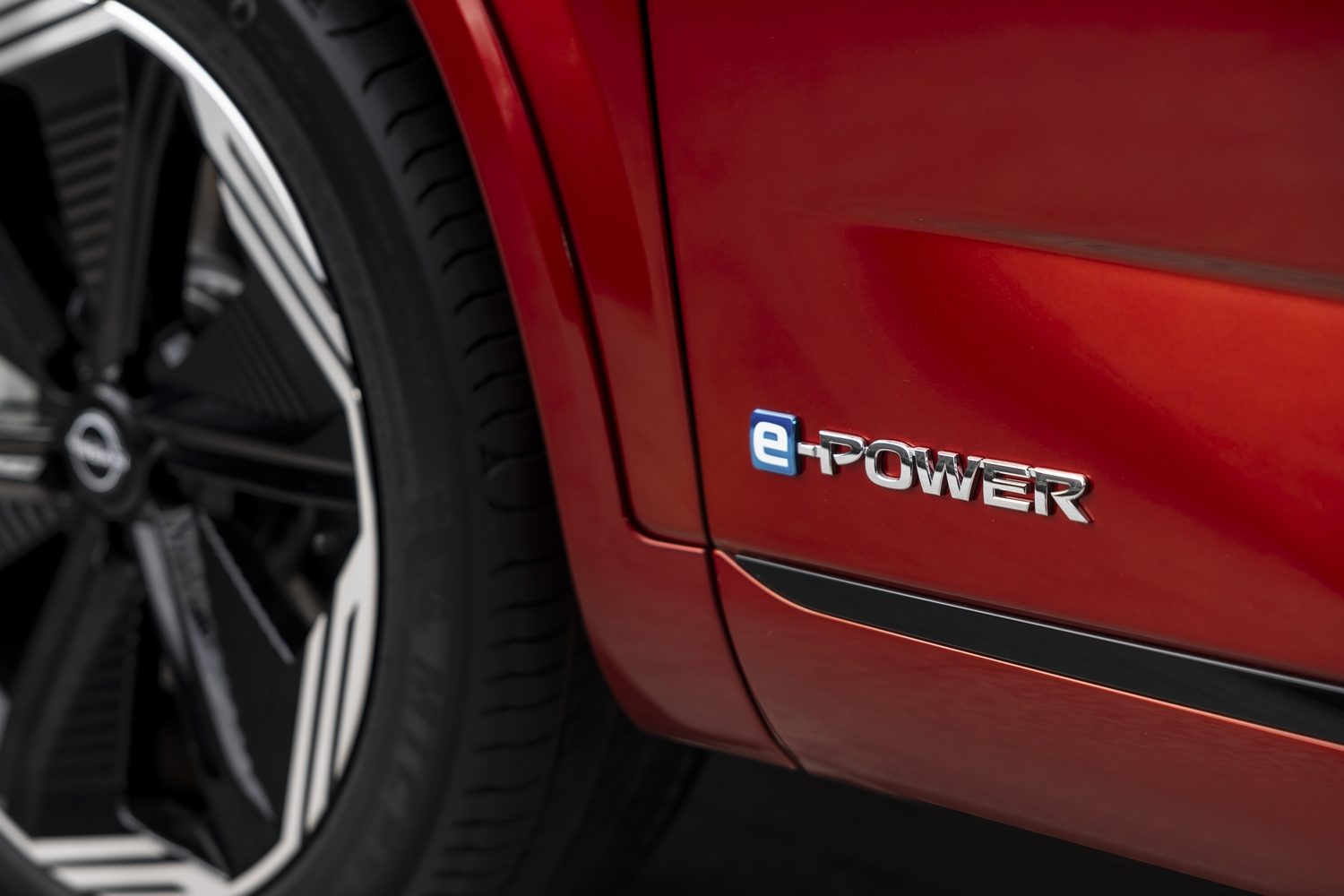
Nissan’s warranty in Ireland is the industry minimum level of cover, which amounts to three years or up to 100,000km, whichever comes first.
What’s changed on the outside of the new Nissan Qashqai?
The biggest change for the 2024 model year Qashqai is the dramatic front-end design. Gone is the old radiator grille, which had a vaguely U-shaped central chrome motif, to be replaced by a very wide item studded with ‘comma’-shaped details. The look of this is supposed to be inspired by ancient Japanese armour, which is a nice nod to the Qashqai’s homeland heritage, and the inclusion of the new grille necessitated a redesign of the LED headlights and daytime running lights, with the overall effect on the Qashqai’s front-end look a pleasing and notable one.
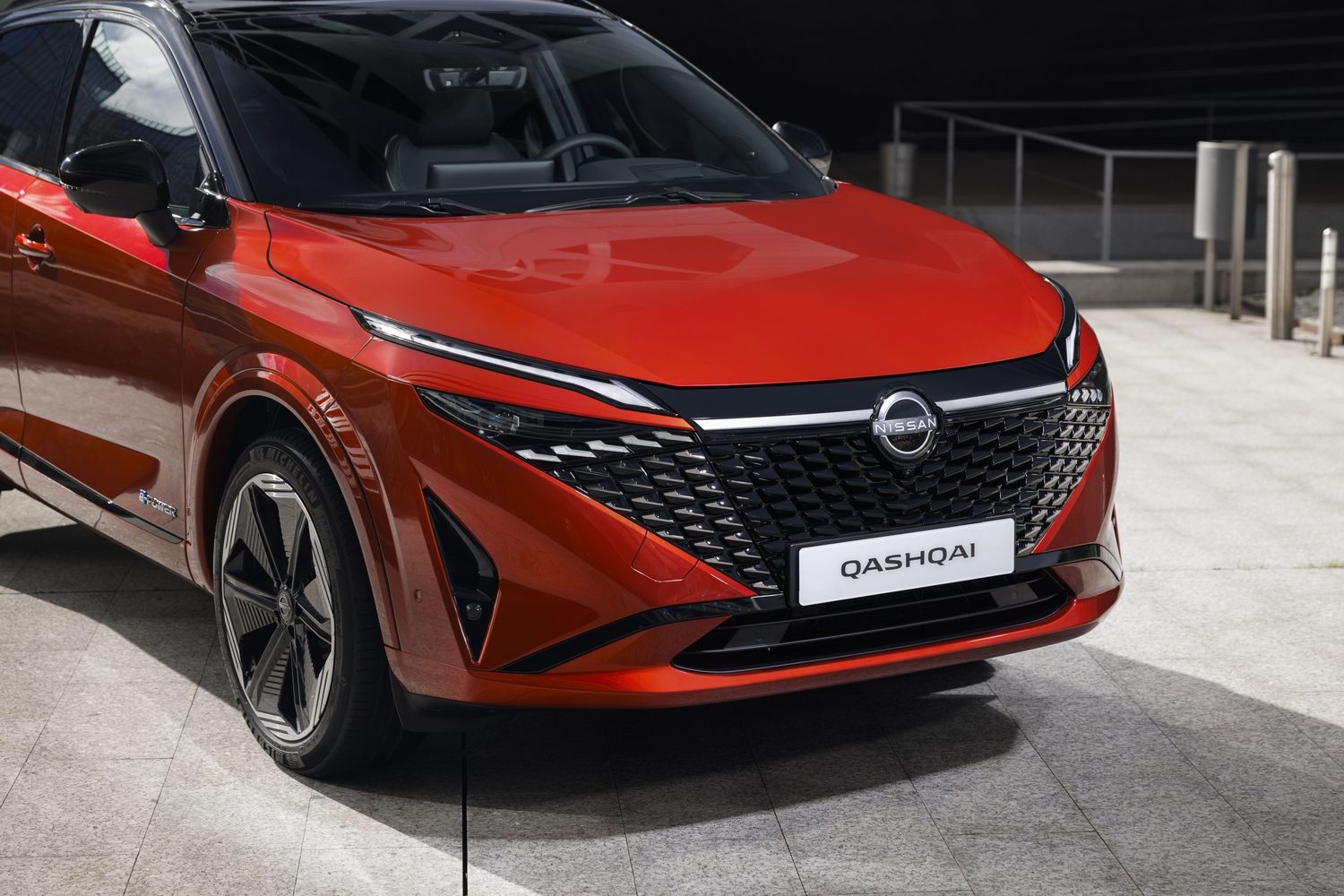
New colours and additional designs of 18-, 19- and 20-inch alloy wheels are also included in the update, as is a subtly enhanced rear with light clusters that are now monochrome and transparent when they are not in use, and which glow ‘super red’ when they’re lit up at night. A different, squarer rear bumper is the finishing touch on the outside.
A look inside the Nissan Qashqai
Material quality is decent inside the Qashqai, with everything feeling well bolted together and conveying the overriding sense that very few exposed plastics are substandard. New for the 2024 model year cars is a swathe of Alcantara material (that’s a high-quality synthetic suede) on higher-spec models, but even without this feature the interior of the Nissan feels suitably classy and tastefully appointed.
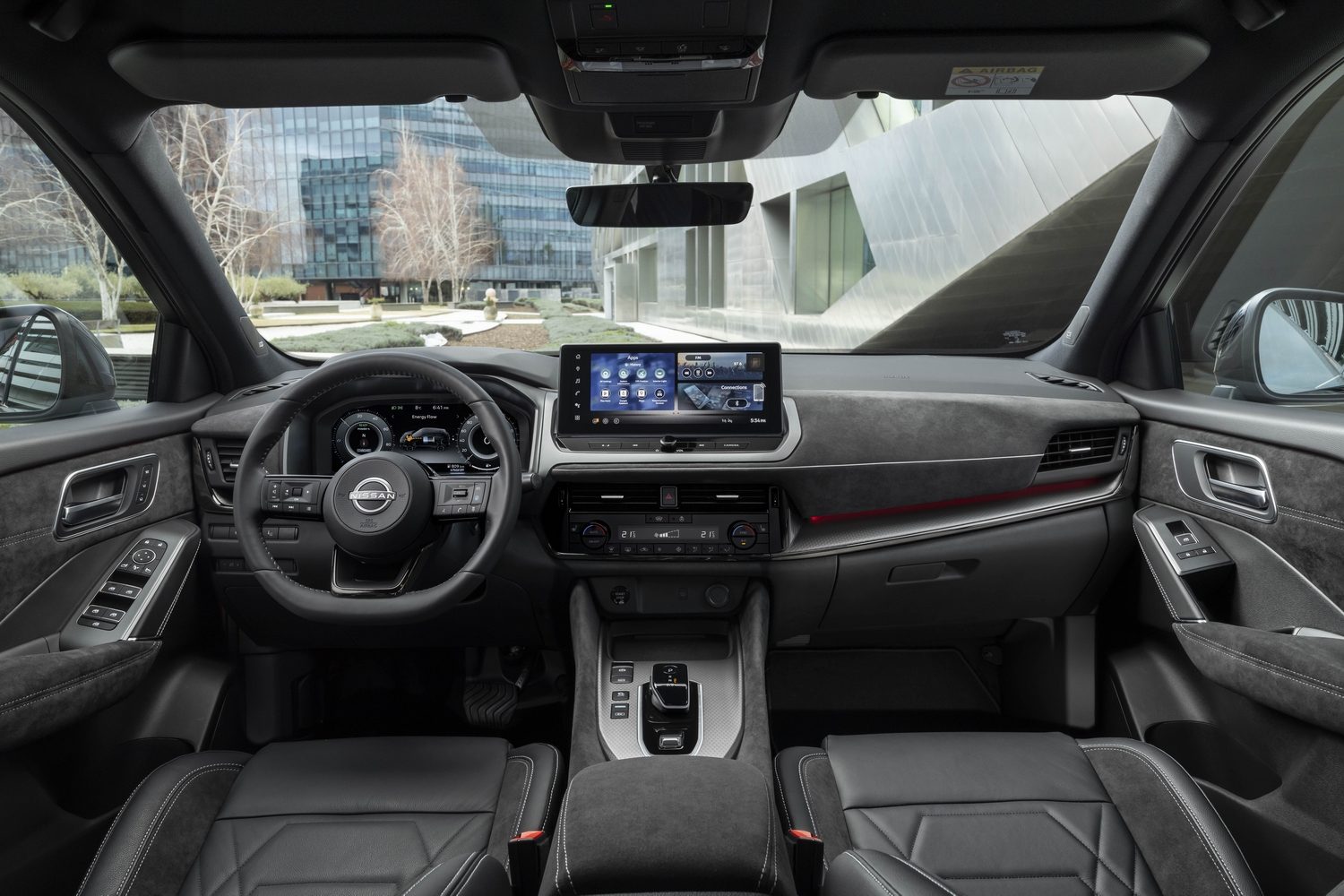
Room is good front and back, with even six-footers capable of getting comfortable in the second row of seats, and a boot rated officially at 504 litres in the e-Power version is neither outstandingly large nor stingily small in this class. There are adjustable floor elements to it, as well, so you can configure the cargo bay how you’d like, although be aware that base-specification cars may have a fixed floor.
The Nissan Qashqai’s on-board technology
This third-gen Qashqai has a pleasant mix of digital and analogue controls, which results in a cabin which is easy to use without feeling dated. There’s a digital instrument cluster and then the main touchscreen for the infotainment, both of which measure 12.3 inches across the diagonal, and the latter of these is now enhanced with Google in-built technology. This improves the mapping for the navigation and significantly increases connectivity, which can be enhanced by owners signing in with a Google Account.
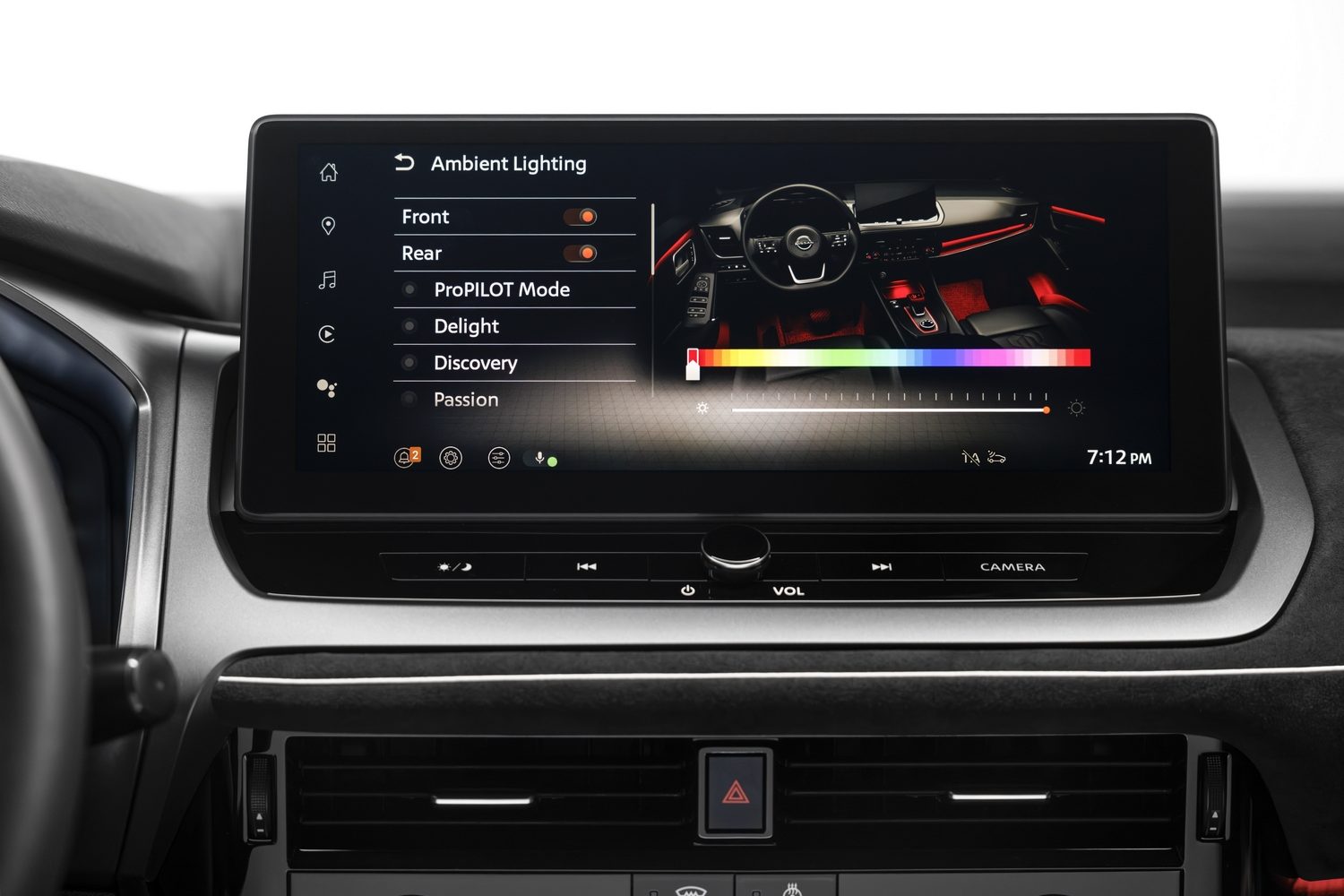
Pleasingly, though, Nissan hasn’t gone all-in on the touchscreen operation, so there are still physical controls for the split-zone climate functions, as well as a bank of switches for the stereo right under the central screen, and there are more buttons on the steering wheel itself and to the side of its column. Ergonomically, then, the Qashqai’s cabin is fundamentally sound.
Technophiles will also like the sharp 10.8-inch head-up display on higher-spec Qashqais, while a wireless smartphone charging pad is intelligently sited underneath the centre stack of the dash.
How many child seats can I fit in the Nissan Qashqai?
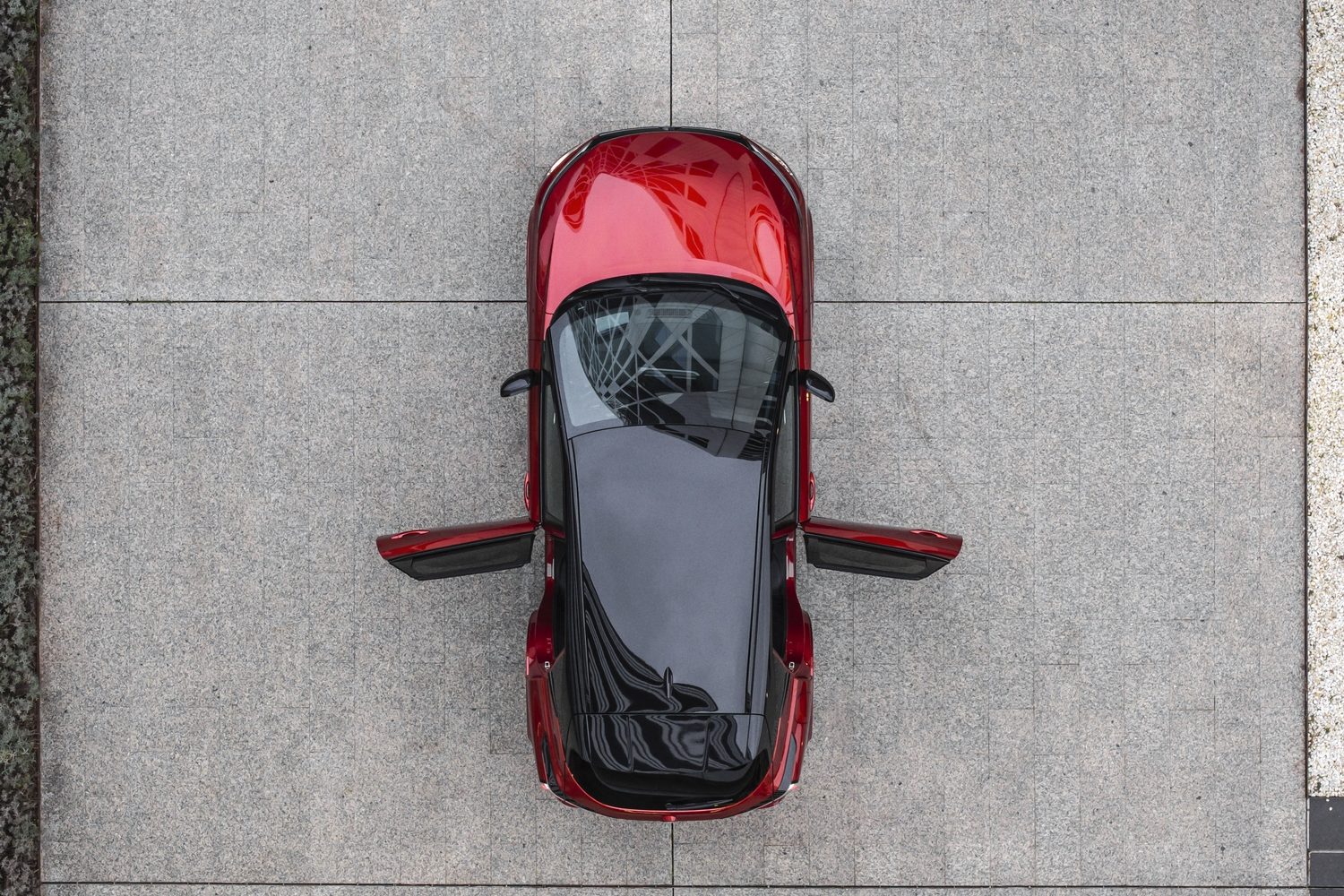
For a family car, it might seem surprising that the Nissan Qashqai has just two ISOFIX locations, these being found in the outer-rear seats. You might, depending on the size of seat you are using, be able to get three across the back bench, but that would depend on the middle seat being smaller and non-ISOFIX-mounted, so in reality two child seats inside is going to be your lot - although the front airbag can be disabled by a switch in the glovebox, meaning a baby or child seat can be fitted in the front passenger seat, as long as it can be secured by means of a three-point seatbelt. As before, the Qashqai’s rear doors open to an especially wide angle, which makes getting bulky seats and babies in and out particularly easy.
How safe is the Nissan Qashqai?
Although this very latest model hasn’t yet been tested by Euro NCAP, the third-generation Qashqai picked up the full five-star rating as recently as 2021, and in it the crossover scored very highly in the safety assist department with a 95 per cent rating. This is because Nissan tends to fit all of its advanced driver assist safety (ADAS) systems - things like lane keep assist, driver attention alert, autonomous emergency braking, blind spot warning and more - to base-spec or near-base-spec models, rather than reserving certain technologies for more expensive trim levels or even the options list.
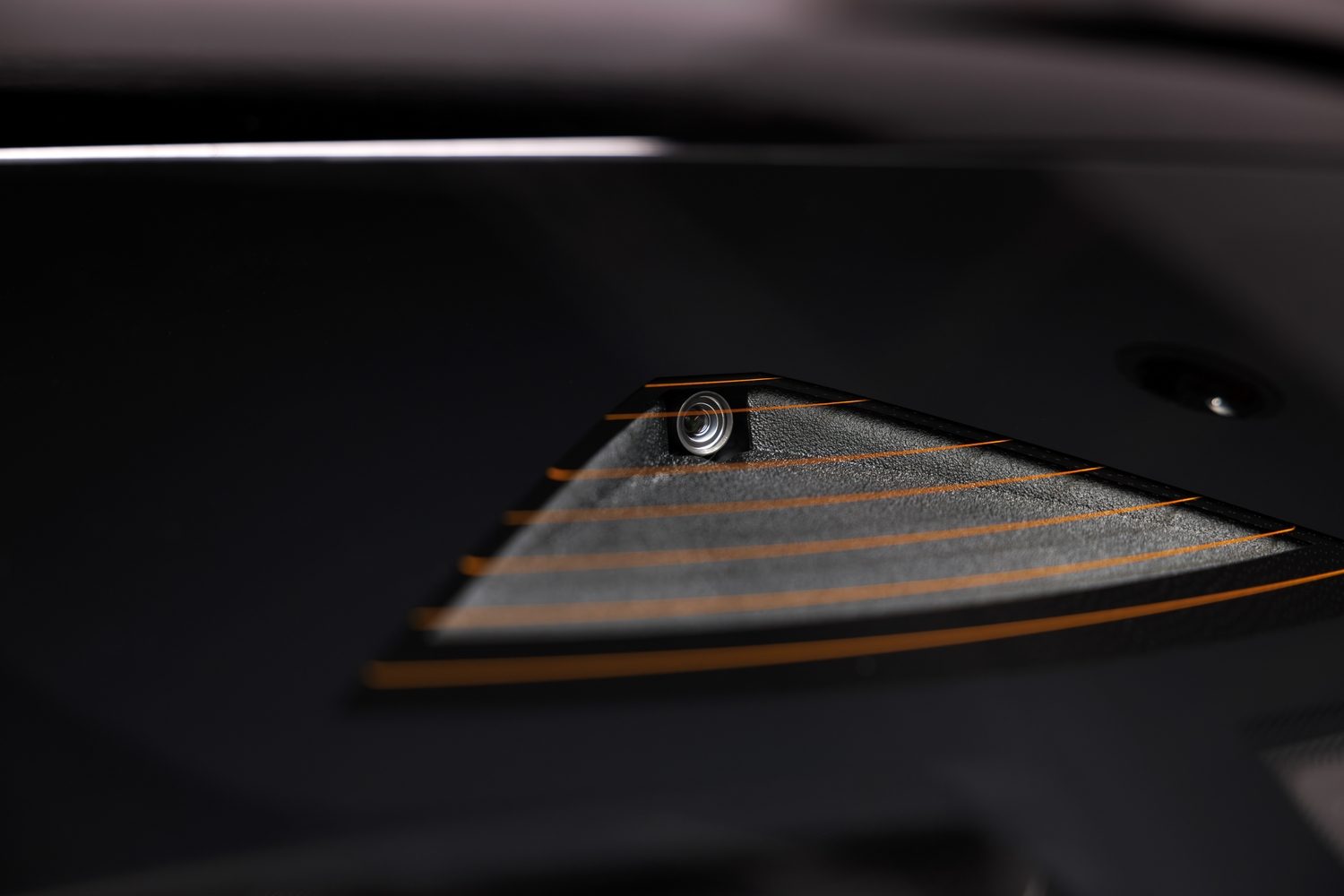
Nissan has improved the ADAS for the facelifted Qashqai, with the 3D Around View Monitor camera system now offering eight different external viewpoints to potentially identify unseen exterior hazards, while an ‘invisible hood view’ is like that seen on some Land Rovers - and can show the front wheels as if the driver were looking at them from immediately behind, so that damage such as ‘kerbing’ (scuffing to the alloy wheels’ rims) can be prevented. This also enhances safety of animals and small children when the car is being parked.
Driving the Nissan Qashqai
Nothing about the way the Nissan Qashqai drives is going to take you by surprise, but then that’s entirely the point. This is supposed to be benign, comfortable, stress-free and quiet family transportation, and there is no need for it to handle in the corners like a hot hatch or to hare off up the road like a scalded cat.
Thus, while keener drivers might lament the overly light and inert steering, or the feeling of lean (the car’s body tipping over to one side or the other) in faster corners, the Qashqai is perfectly competent. On a twisting road, it is fine - no more, no less, and that’s all it needs to be.
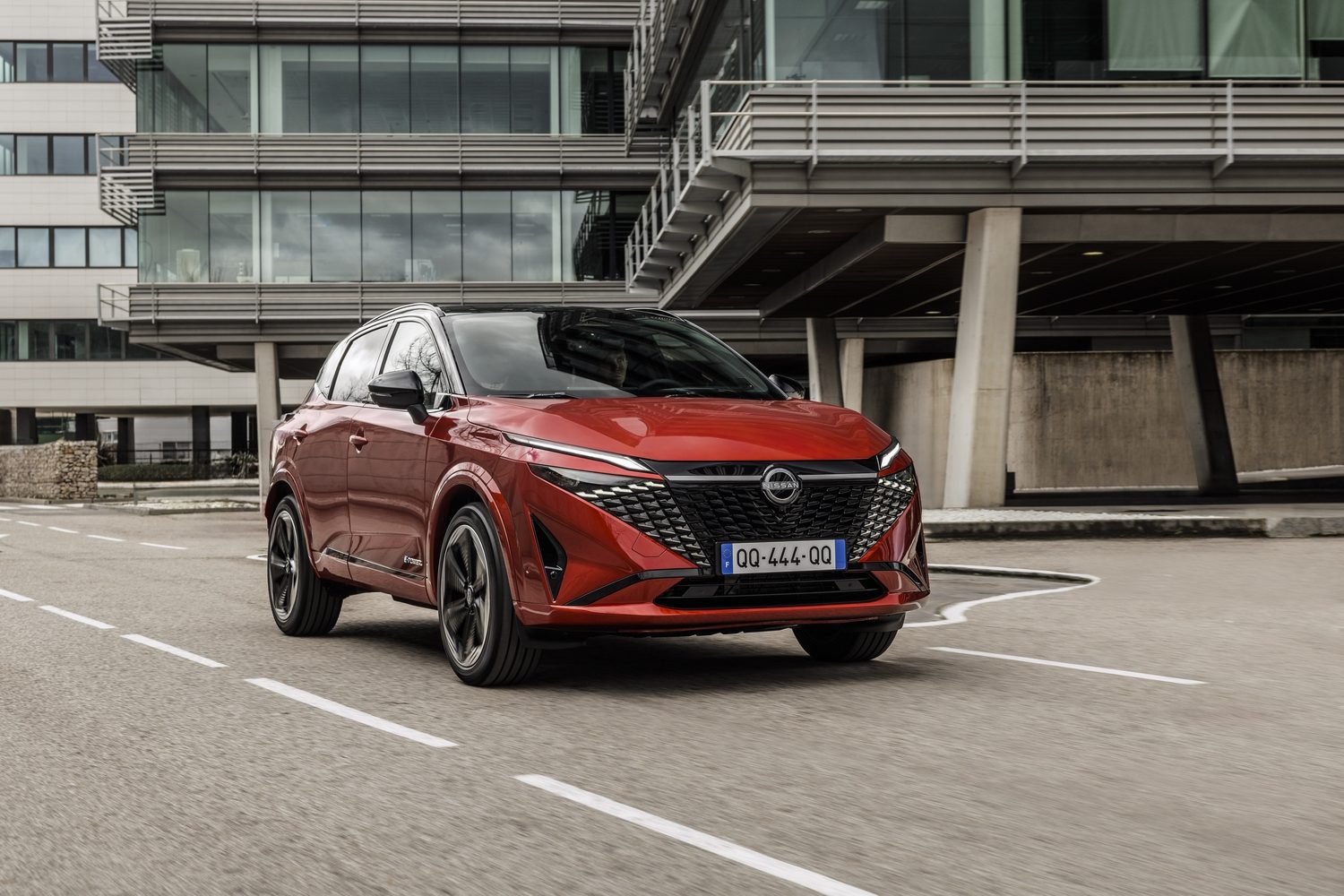
However, with the commanding driving position, good visibility out of the glasshouse and the well-calibrated major controls, the Nissan is tremendously confidence-inspiring in terms of its urban and extra-urban drivability. Placing this car on the road is a cinch and at no point does it feel overly large or heavy, despite its SUV-like physical dimensions. The way the e-Power’s drivetrain delivers its peak outputs of 190hp and 330Nm smoothly and efficiently is impressive, and the general level of ride comfort and mechanical refinement is exceptional.
Admittedly, the e-Power drivetrain itself is a bit of an oddity, as the 1.5-litre petrol engine never directly turns the Qashqai’s front wheels - the 140kW electric motor does that. Nevertheless, as the Nissan only has a small 1.8kWh battery pack, that petrol engine is running more often than you might imagine, whereupon it makes a continual background thrumming noise. Extend the Qashqai with larger pushes of the accelerator pedal and the engine becomes quite vocal, although it’s never too coarse or discomfiting to listen to.
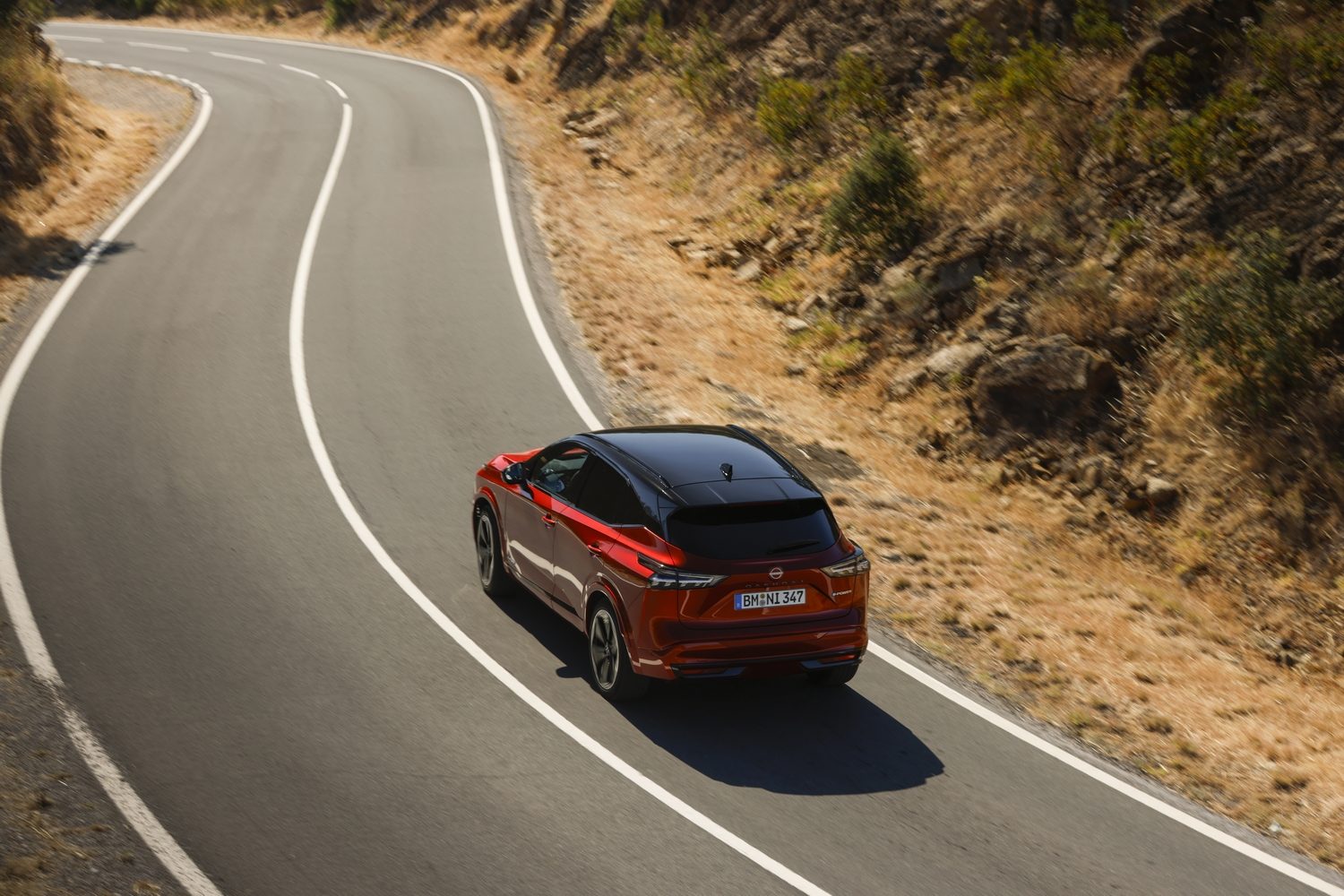
Good on the motorway, quiet about town and a bit forgettable on twisty country roads... that’s the ideal set-up for a family crossover such as the Qashqai, so the Nissan continues to be a strong contender in its class as a result.
How economical is the Nissan Qashqai?
Powered by the 1.3-litre petrol engine, the Qashqai officially uses between 6.2 and 7.1 litres/100km, with associated CO2 emissions of 141-160g/km. Not bad, but the eco-champ is therefore this e-Power model, which improves all the above data to 5.1-5.3 litres/100km and 117-120g/km, placing it in a low motor tax bracket. During our test drive on a mixed test route of motorway and some mountain roads - and without being driven particularly hard - we were seeing more like 7.0 litres/100km, which isn’t all that impressive in the real world.
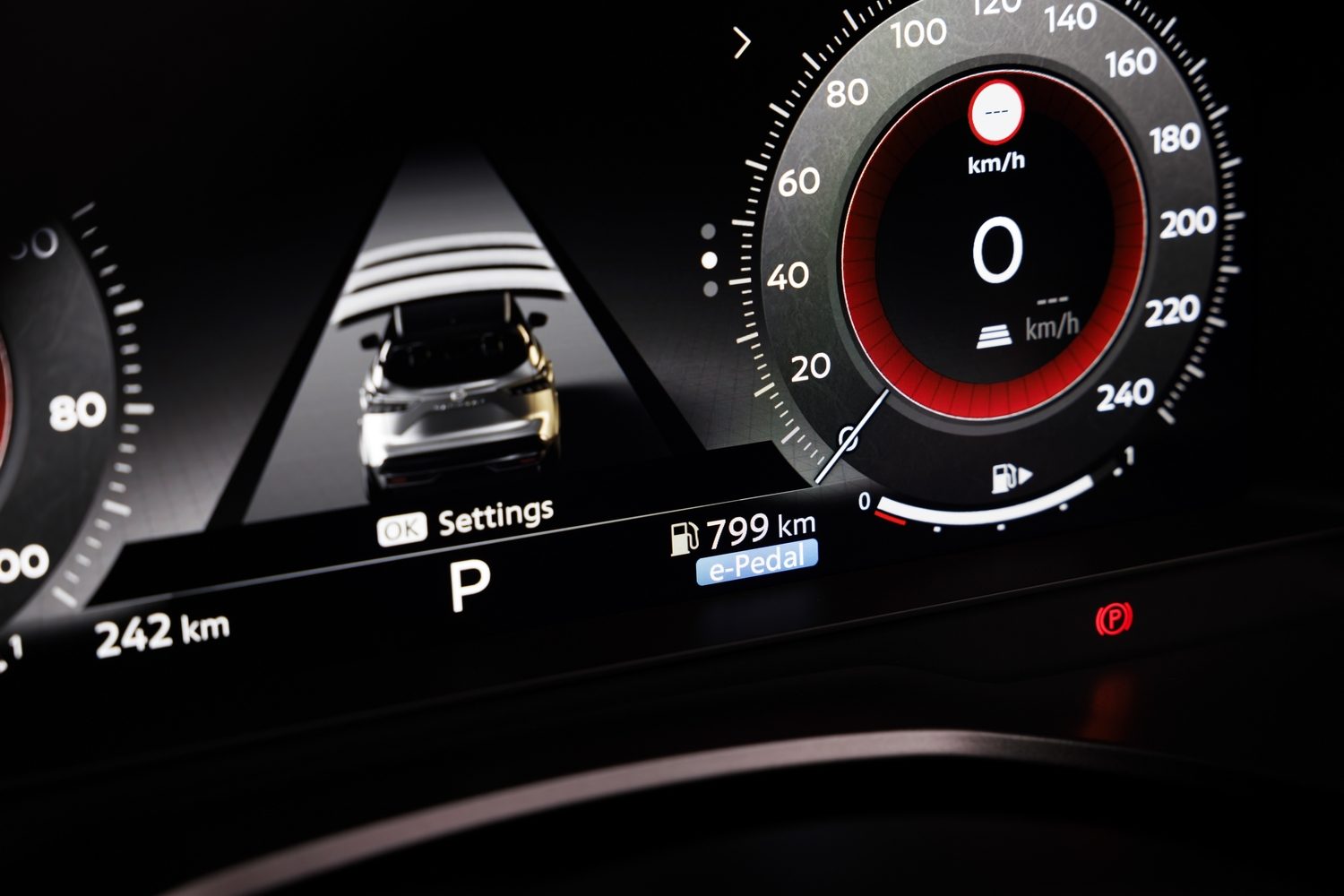
The reasons you’d buy a Nissan Qashqai
With its smart exterior looks, spacious and well-equipped cabin, desirable levels of onboard technology, smooth and economical drivetrains, and accomplished driving manners, the revised third-gen Nissan Qashqai does everything well and nothing notably badly. It’s not the most exciting car in the world, but it’s supremely well-geared to the sort of no-nonsense family life it has been built to satisfy - which is why it will continue to sell like hot cakes, not just in Ireland but further afield, too.
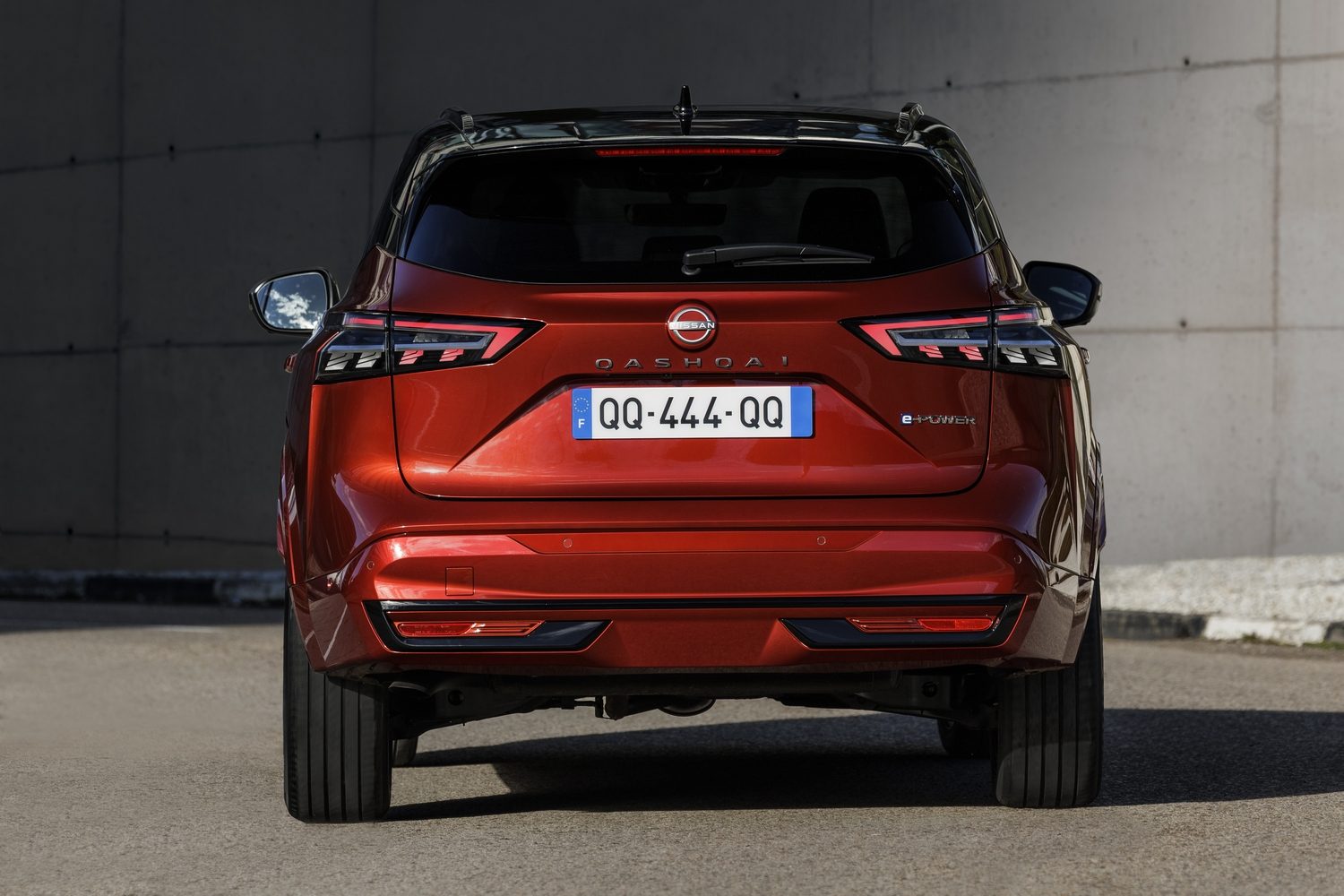
Ask us anything about the Nissan Qashqai
If there’s anything about the Nissan Qashqai we’ve not covered, or you’d like advice in choosing between it and other cars, you can avail of our (completely free) expert advice service via the Ask Us Anything page.

